Ants in the Backyard
Martha O'Kennon
When I first discovered that ants are not to be feared but marveled at, I thought that they all looked alike, and that they were all variations on the Carpenter Ant, and needed to be kept away from our nice wooden houses. One of the first things I learned was that even so-called Carpenter Ants don't really go for houses. They are often carnivores, that is to say mostly insectivores. Some eat plants. Here I'm going to show you some of the ants I've seen in my yard. Unless otherwise stated, Steven Wang, @stevenw12339 of iNat, identified the ants in these pictures and gave me useful information about each one.
Remember that there is information in the name of the file for each image. You can see it by mousing over the image - look at the lower left of the screen. Or you can click on the image to get to the (usually) larger image. Then the info is displayed in the address line above. Sometimes the second click will actually display a different view of the original image.
Carpenter Ants (genus Camponotus)
Here is one of the most common Carpenter Ants, the Eastern Black Carpenter Ant, Camponotus pennsylvanicus. One of its most useful distinguishing marks is the bright yellow hairs (setae), easily seen in a decent light, on the abdomen. In the last image, this ant is one of the kinds that can tend treehoppers and/or their nymphs. Here the treehopper is Entylia carinata, the keeled treehopper. It likes thistles in my yard, but I understand it has other pet plants elsewhere. Note that the ant seems to be nuzzling the nymph and the nymph is responding by exuding a drop of "honeydew", a favorite of ants. In picture 4, I thought I had a bigger and badder (maybe even a house-wrecker) Carpenter Ant, but it turns out to be a Queen Eastern Black Carpenter Ant, like all the others!
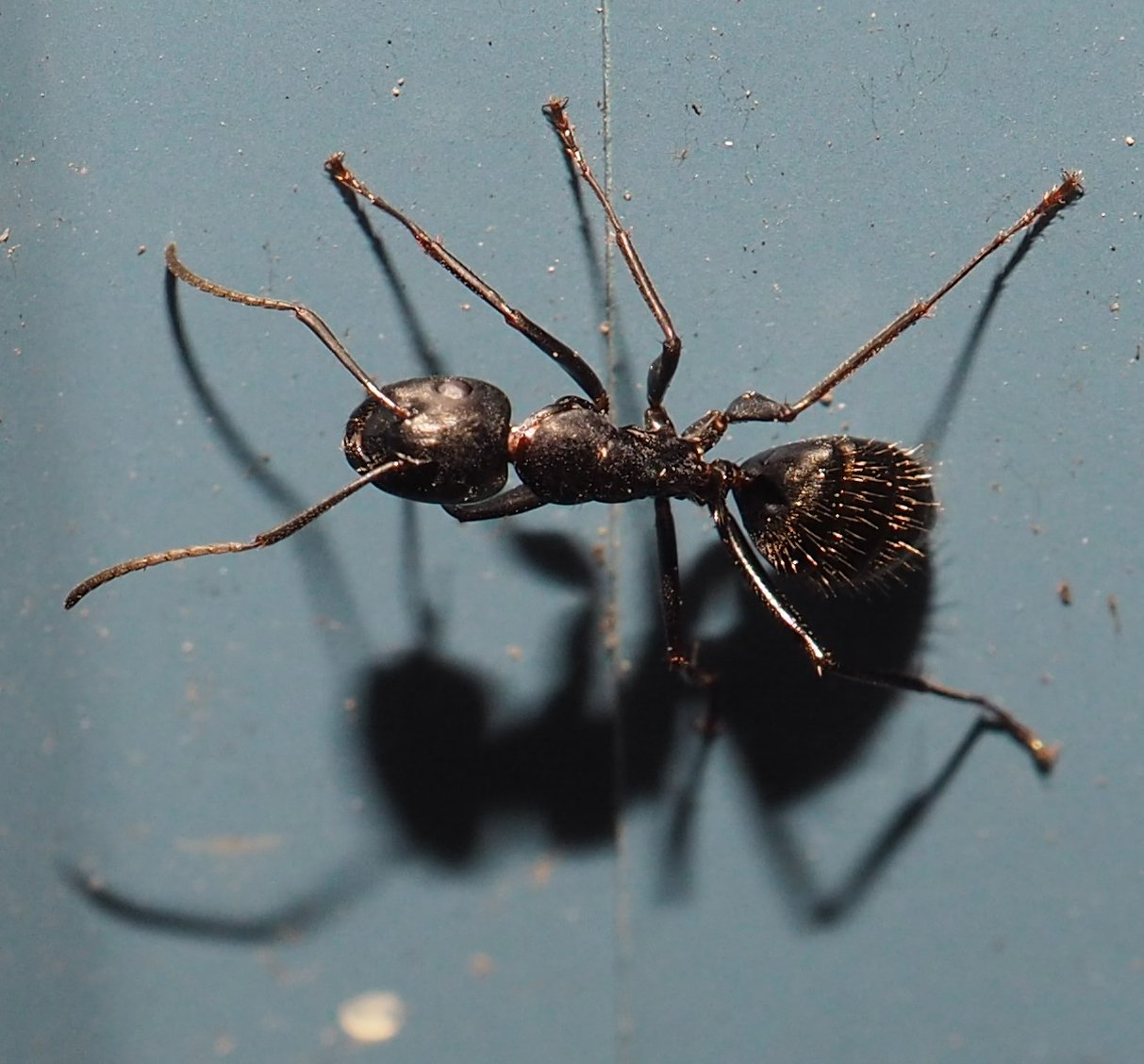
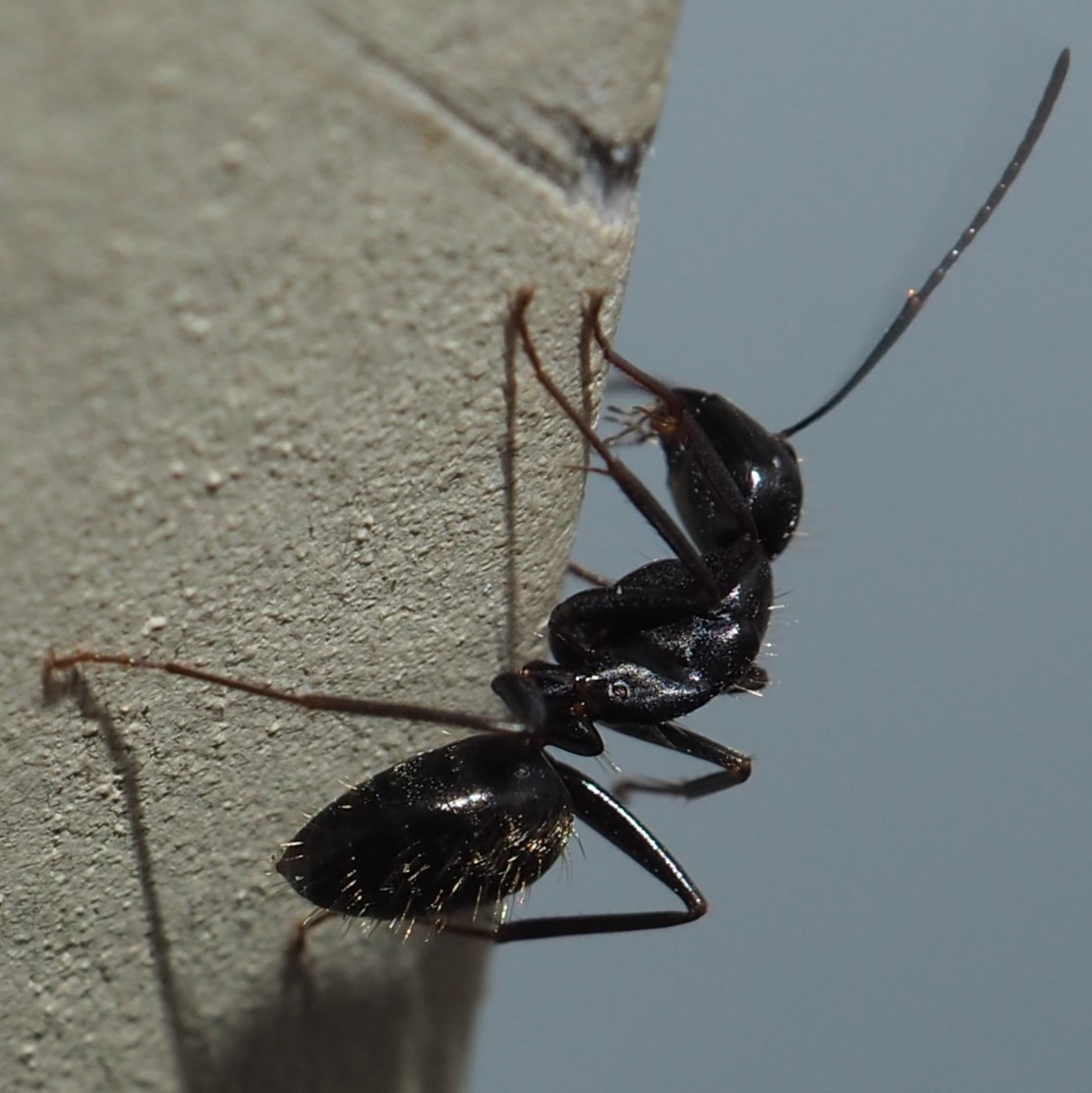
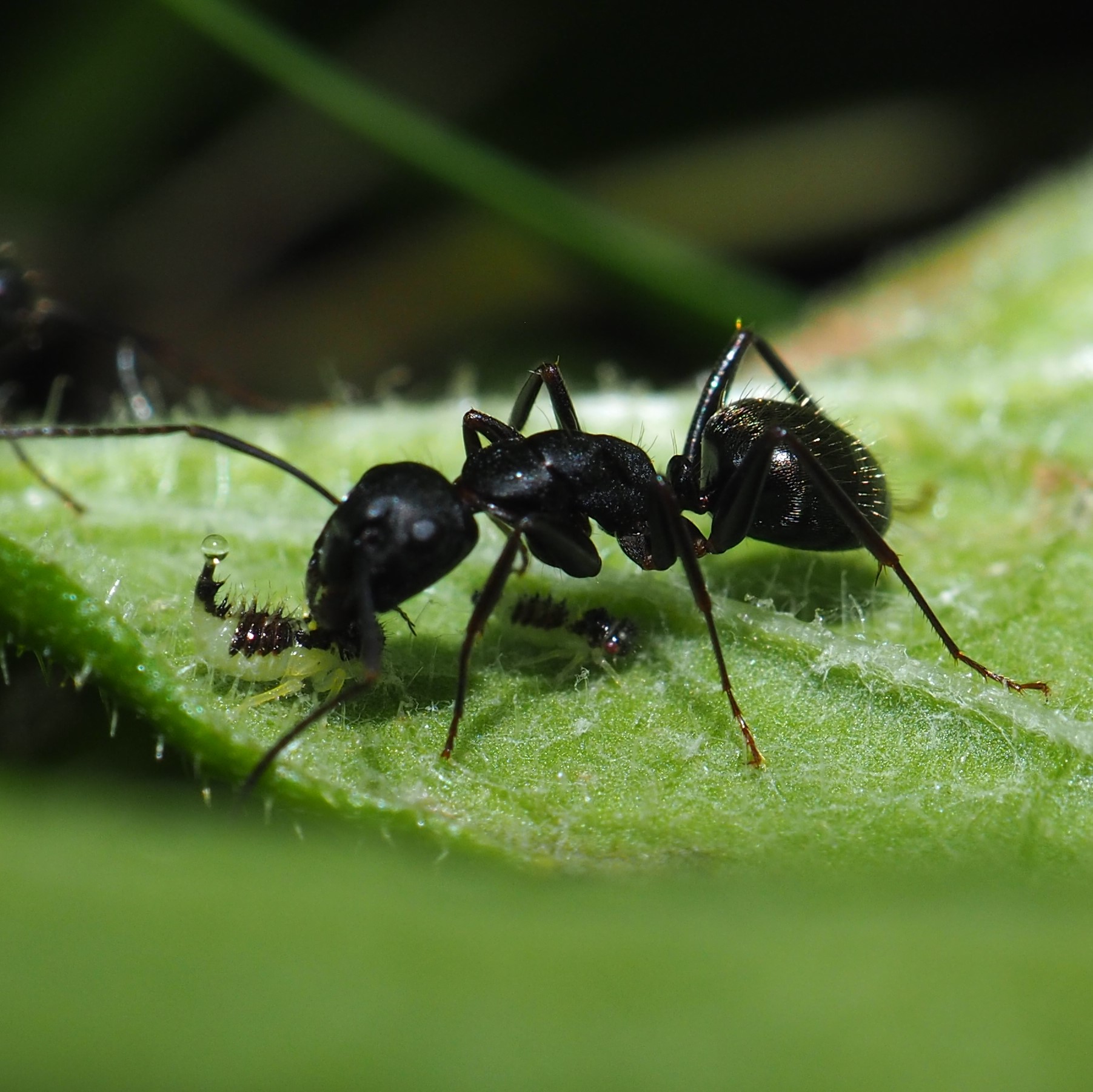
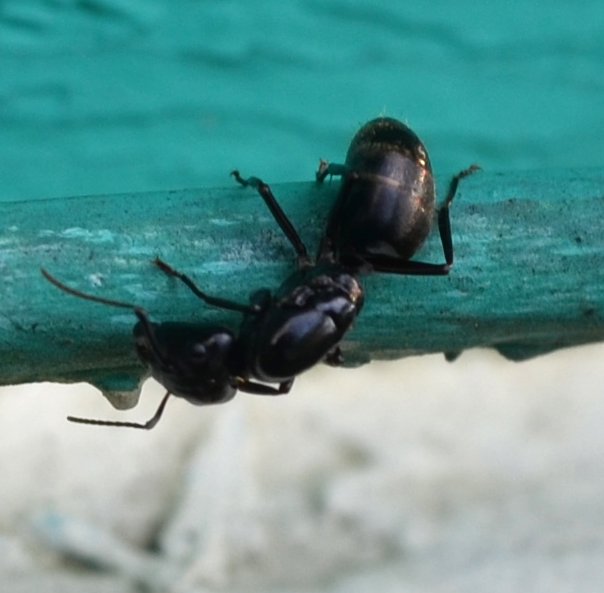
Here is an Eastern Black Carpenter Ant in the process of milking a bunch of Keeled Treehopper nymphs, one by one. Note how the Nymphs lean in to offer their rear ends to the ant so that they will get milked.

This is the Smaller Carpenter Ant, Camponotus nearcticus. One clue is shiniess, although I'm not good at spotting this in my own photos. The last one turns out to be a Queen.
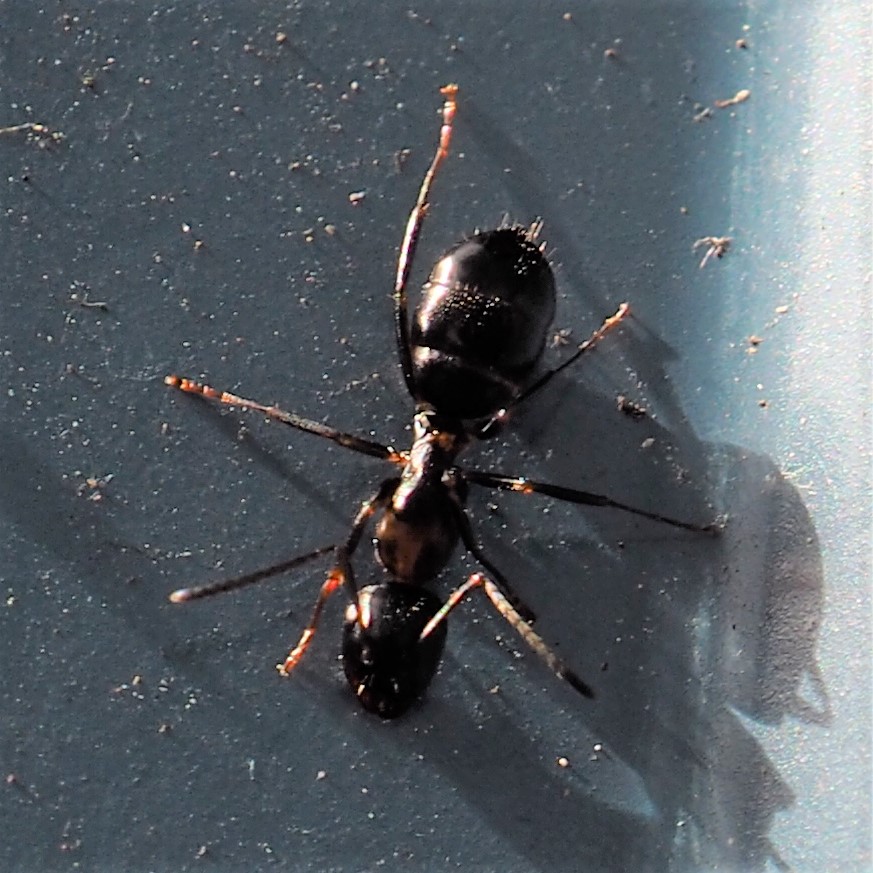
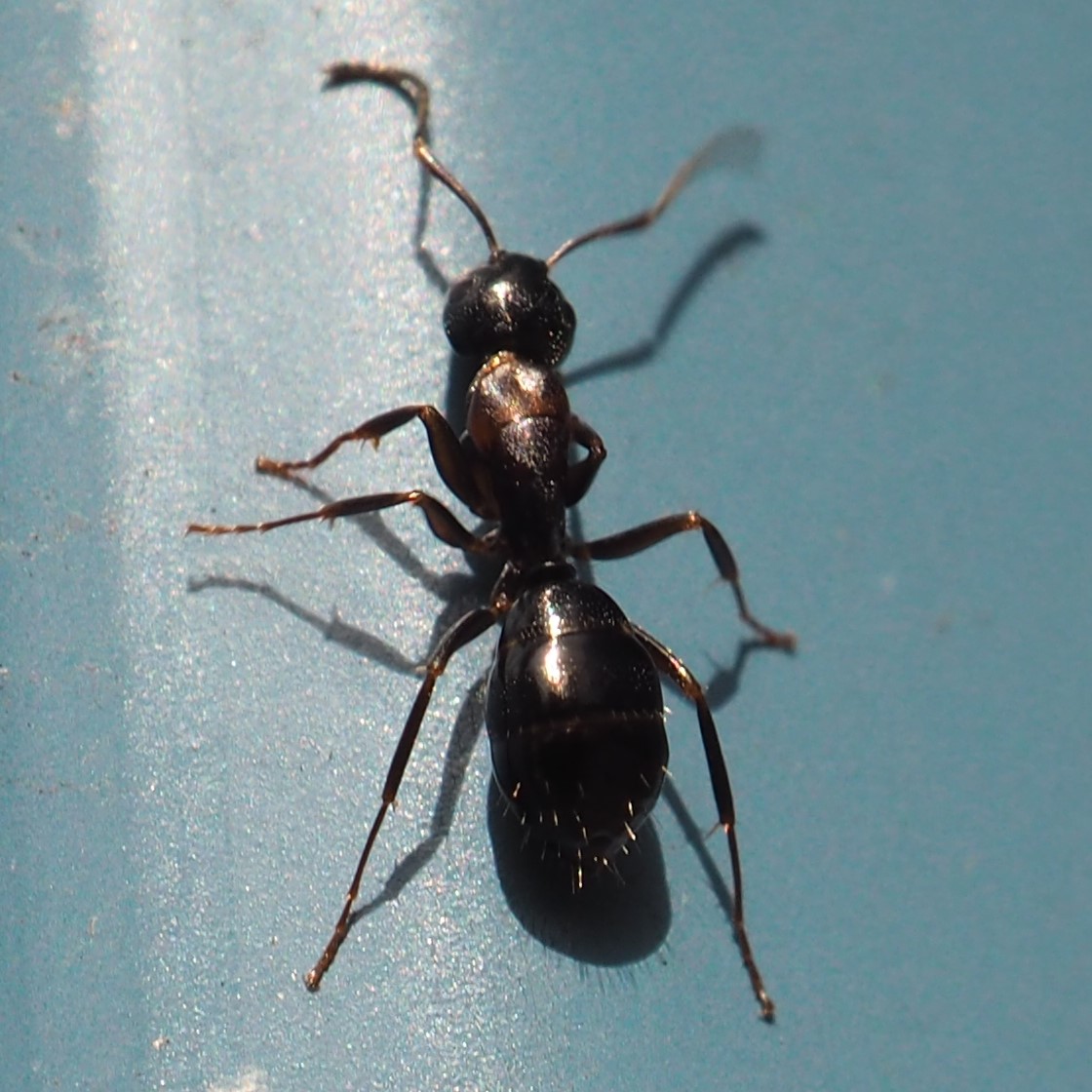
.jpg)
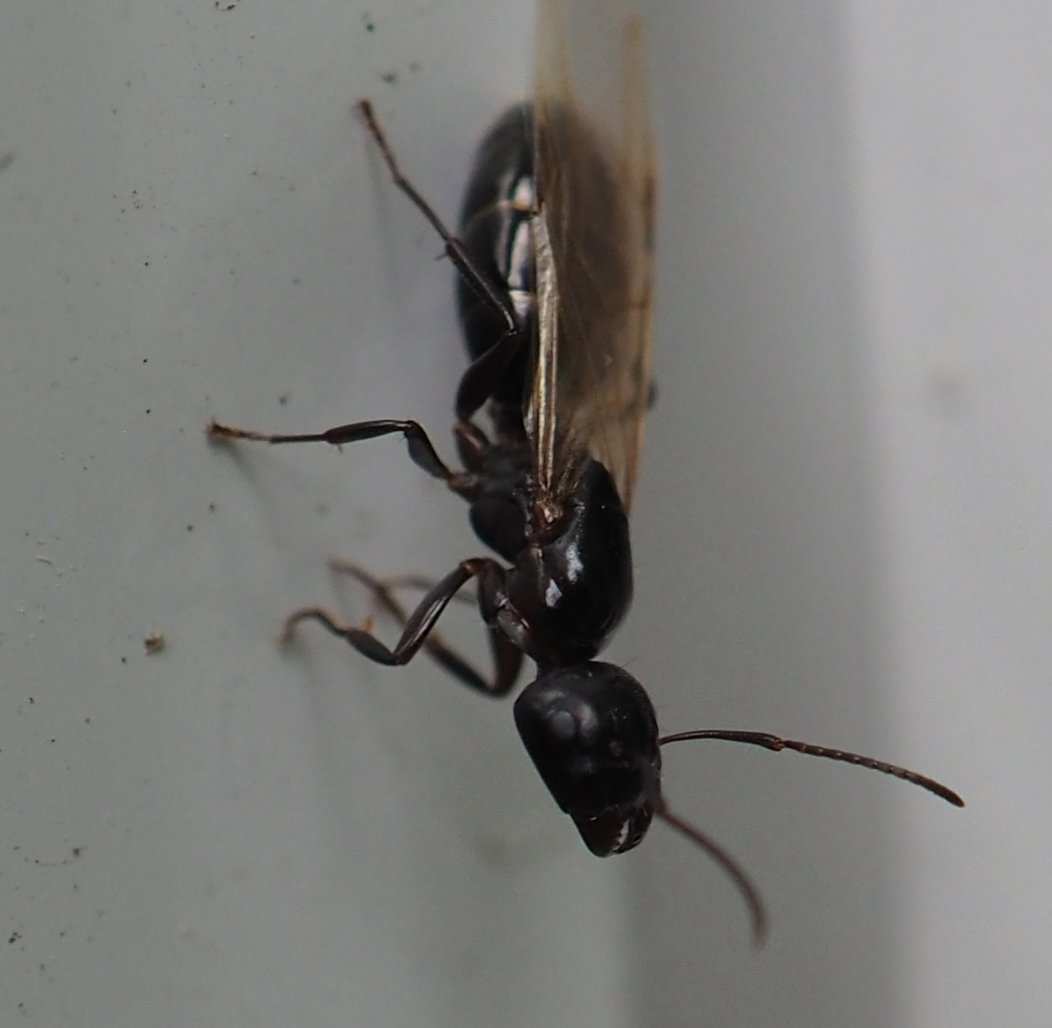
This is Camponotus subbarbatus, a bright rusty carpenter ant.
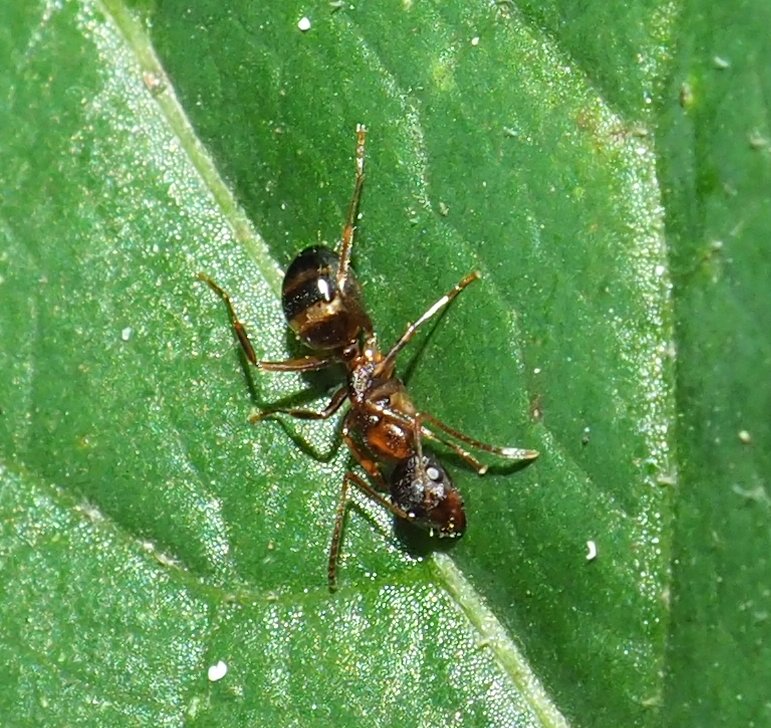

Other Carpenters and Sugar Ants (genus Camponotus)
There are an awful lot more members of genus Camponotus. Here are some that have been ID'ed simply as Camponotus. The fourth one was ID'ed on iNat as Camponotus chromaiodes.
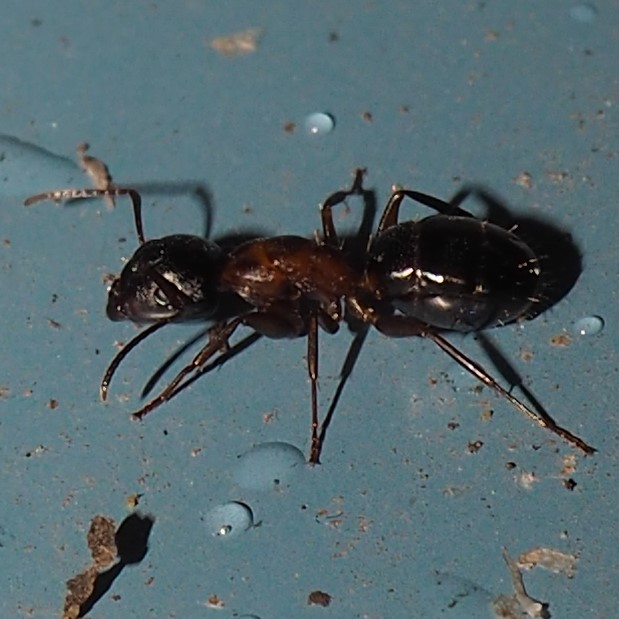

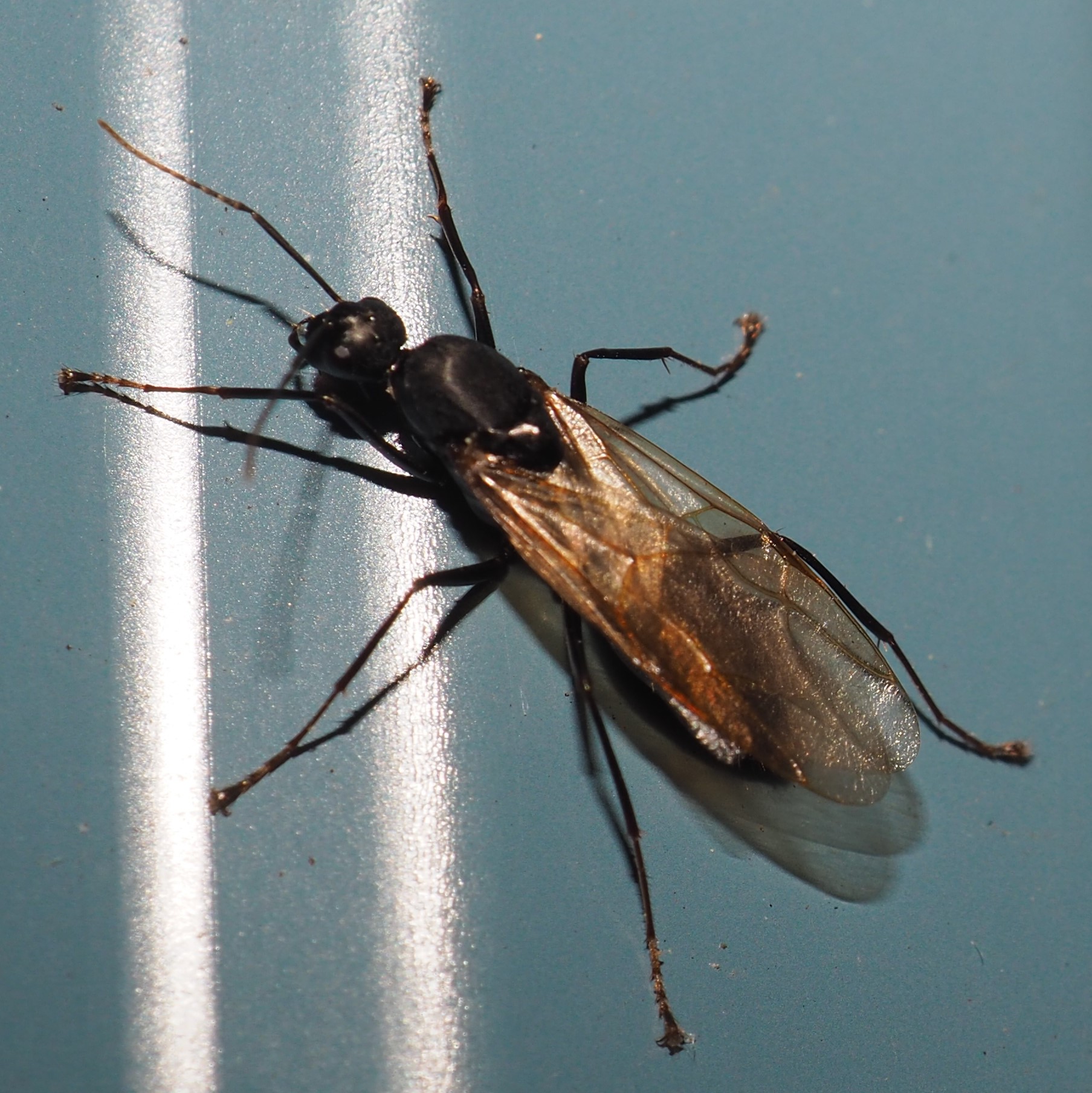
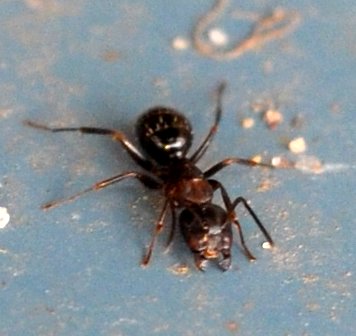
The Small Honey Ant (Prenolepis imparis)
The first Ant I met was the Small Honey Ant (formerly known as the False Honey Ant). The first one I ever met was a Queen. They are remarkable in that the workers, males and queens are all so different in color and size. The worker is a non-fertile female that is easy to identify mainly by her large abdomen or gaster. In this first picture, the worker has been foraging very effectively and it shows in the size of her greatly expanded gaster. Next is a male and a worker side by side, and last shows the huge discrepancy in size between the enormous queen and the tiny male.
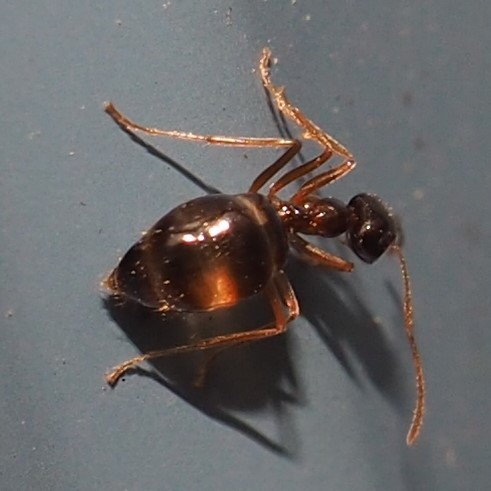
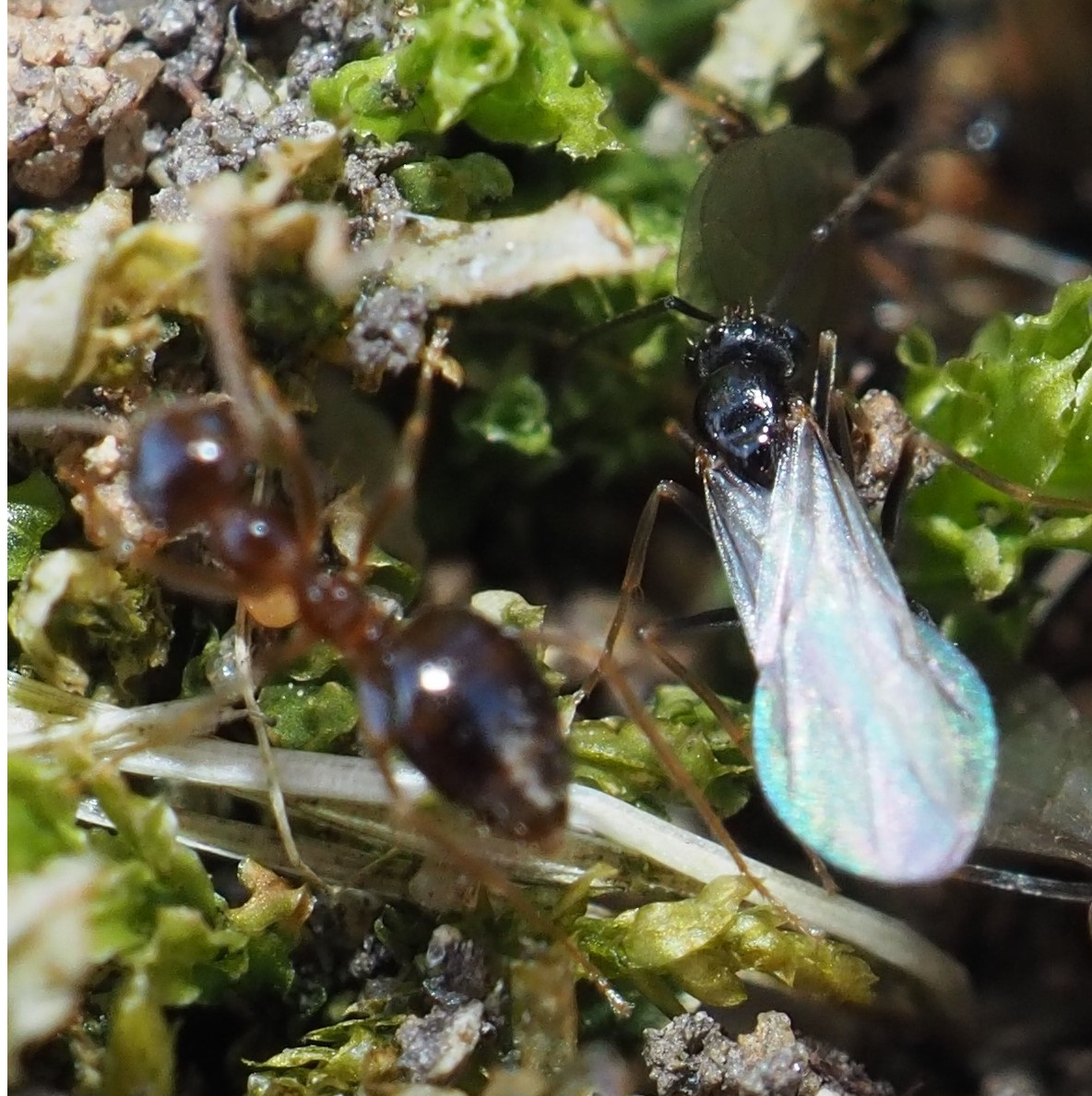

If you have time to peruse it, here is an account of a scene from April 2019 in which several queens mate and escape to start new nests.
Cocktail or Acrobat Ants - Genus Crematogaster
It is easy to spot the Acrobat Ant since it has a heart-shaped gaster. It is likely to be one of the Ants to be found on a Peony Bud, nibbling at the edges of the petals so that the Peony can open. Since it is a lot smaller than an Eastern Black Carpenter Ant, it is also the Ant to look for when the nymphs of the Two Mark Treehopper are still very small. Here one has stroked a nymph and the nymph has emitted a drop of honeydew.
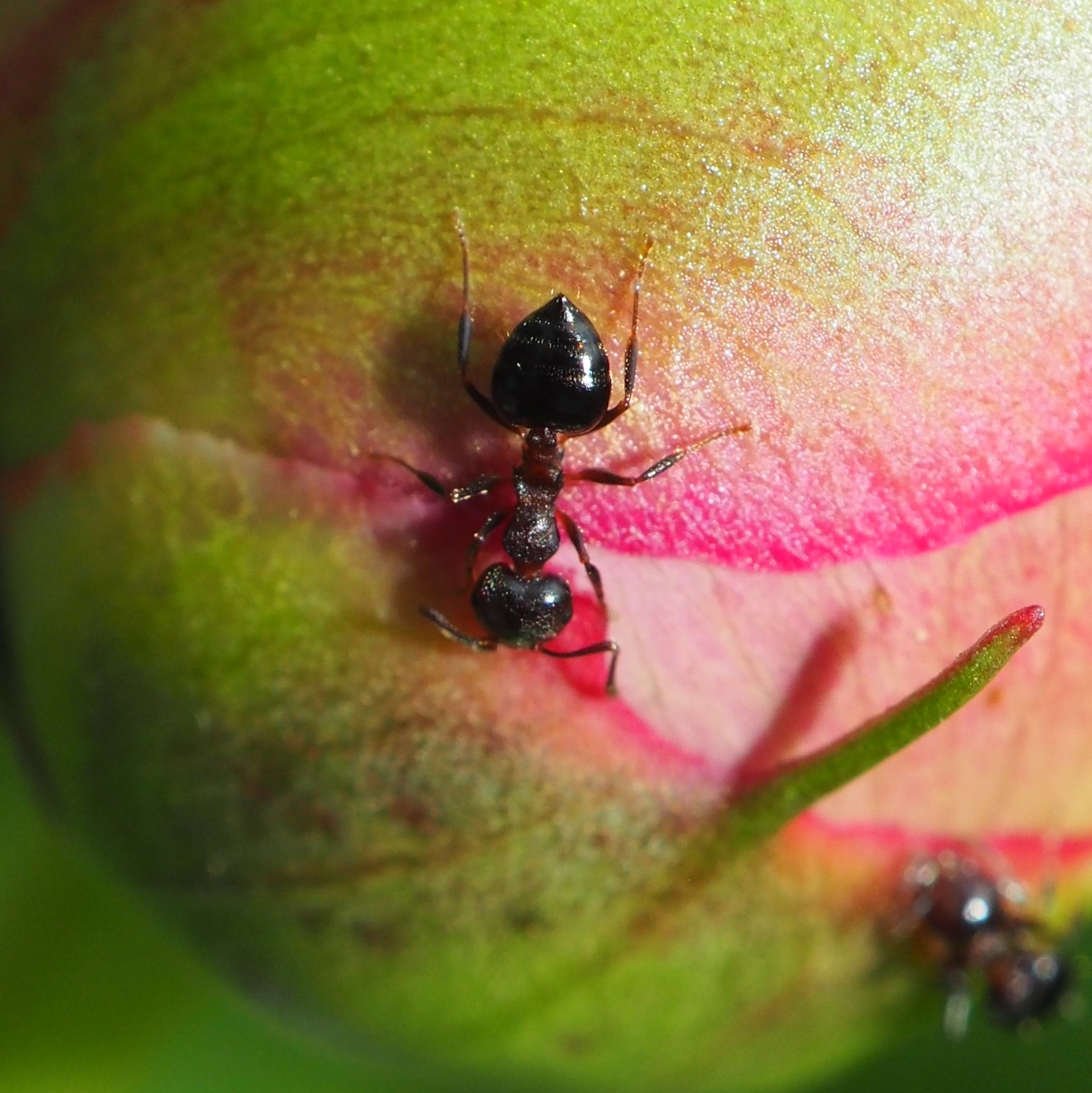
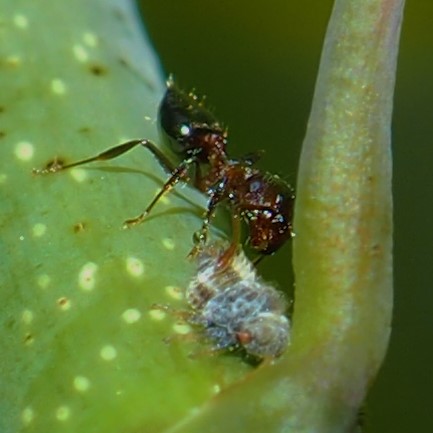
Citronella Ants - Genus Lasius
Here is the Smaller Yellow Ant, Lasius claviger. Look how different it may appear from various angles.
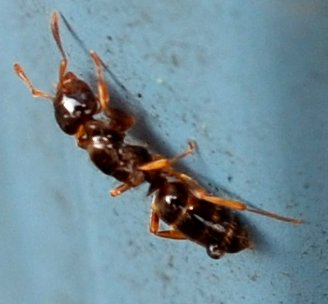
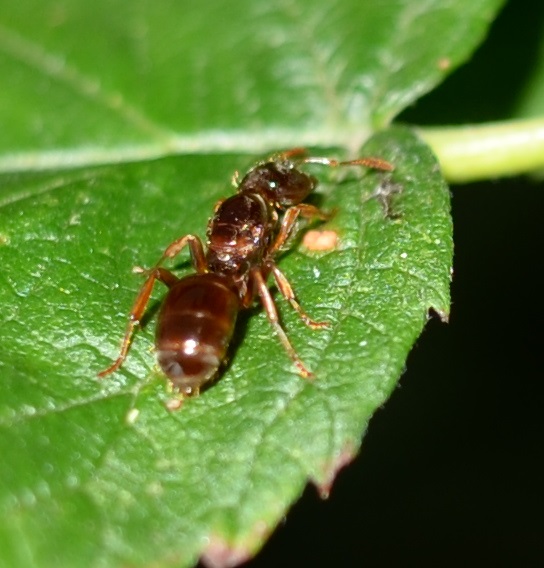
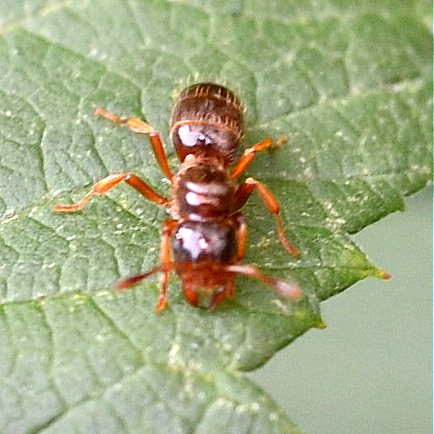
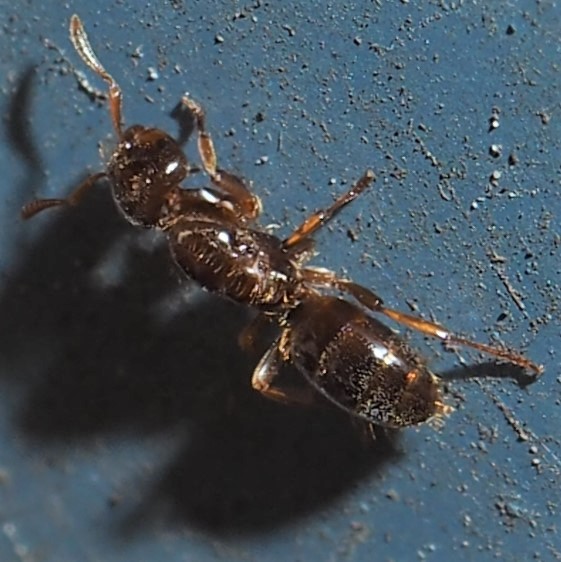
The Larger Yellow Ant, Lasius interjectus. Whoever named this ran on a different ROYGBIV scale from me.
.jpg)
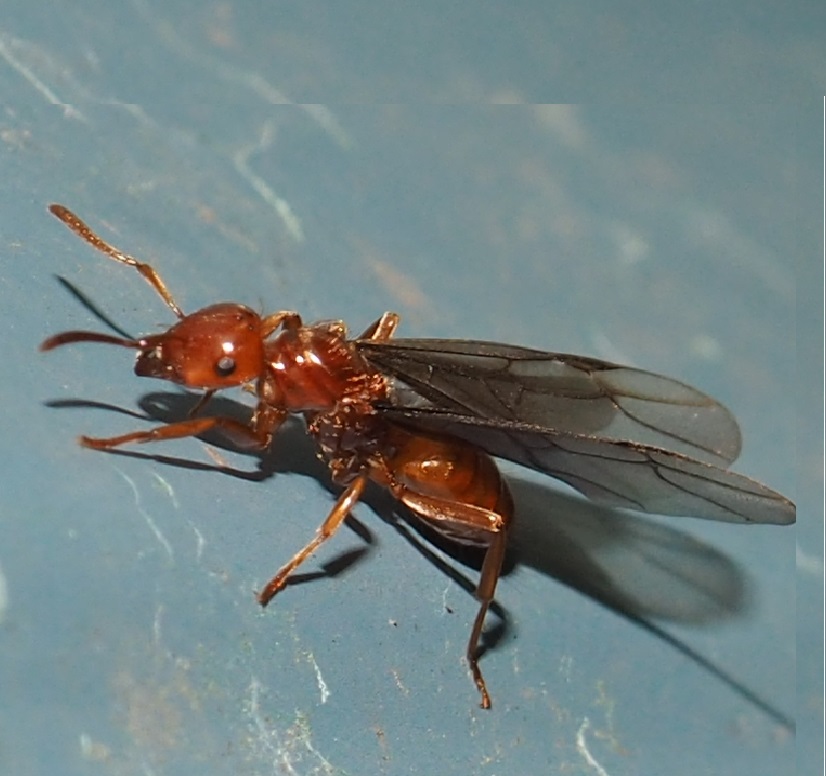

This Turf-grass Ant, Lasius neoniger, has a little nest in my South Yard. On June 1, 2020, ants were coming in and going out from that nest.
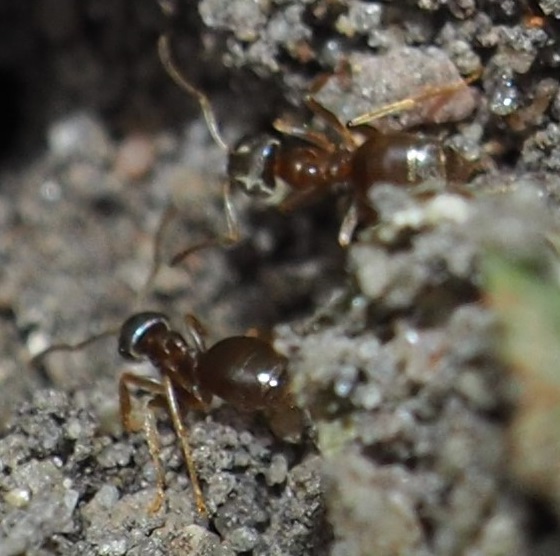
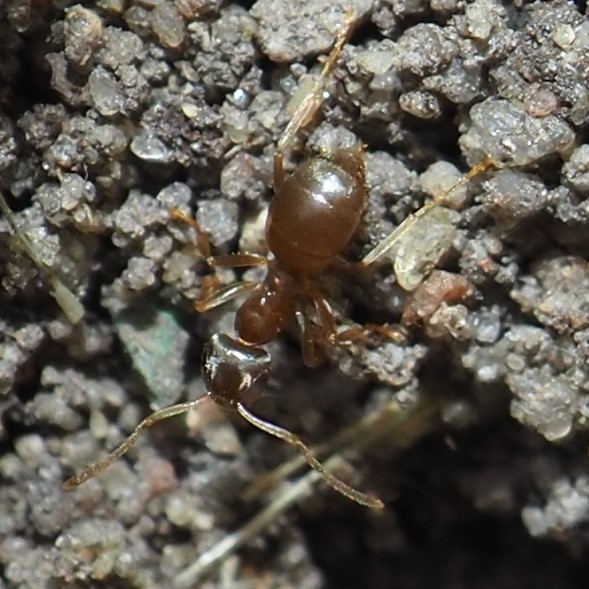

Here is one more Lasius: Lasius americanus, the American Cornfield Ant, is a tiny ant that I found on top of a redbud leaf during the Socially Distant Bio-Blitz of July 26, 2020. I like its sleek face.
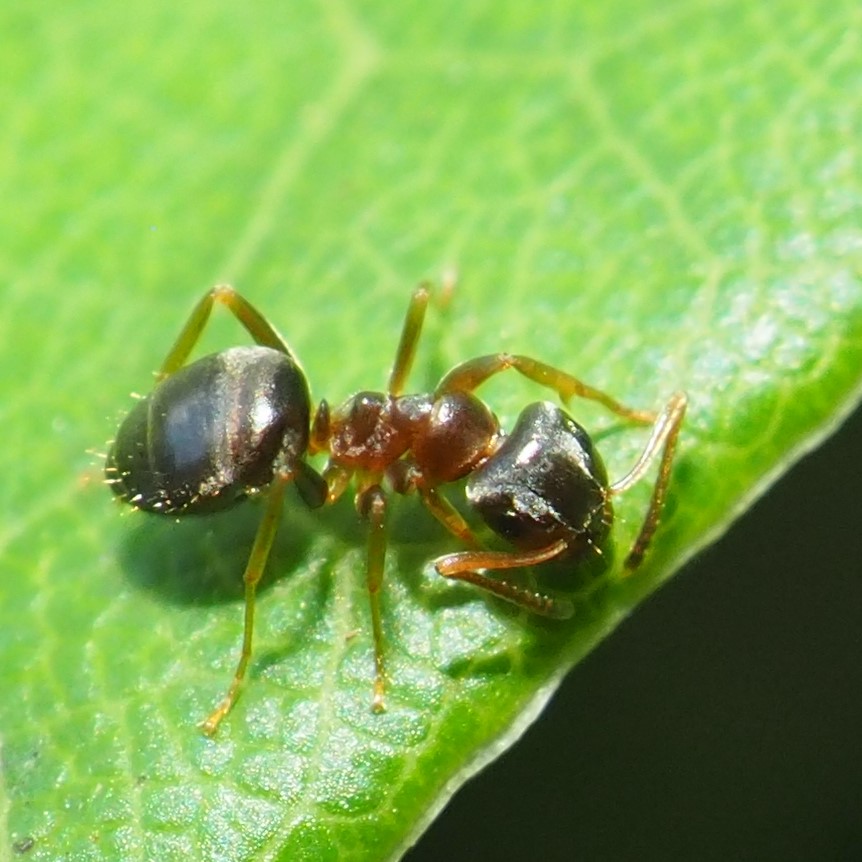
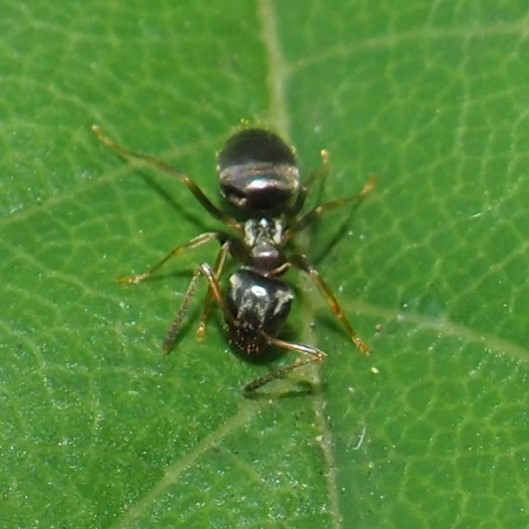
This Turfgrass Ant, Lasius neoniger, was found in the South grassy area, down from the generator.
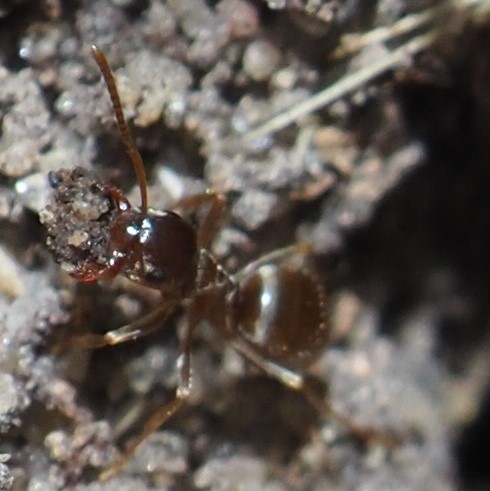
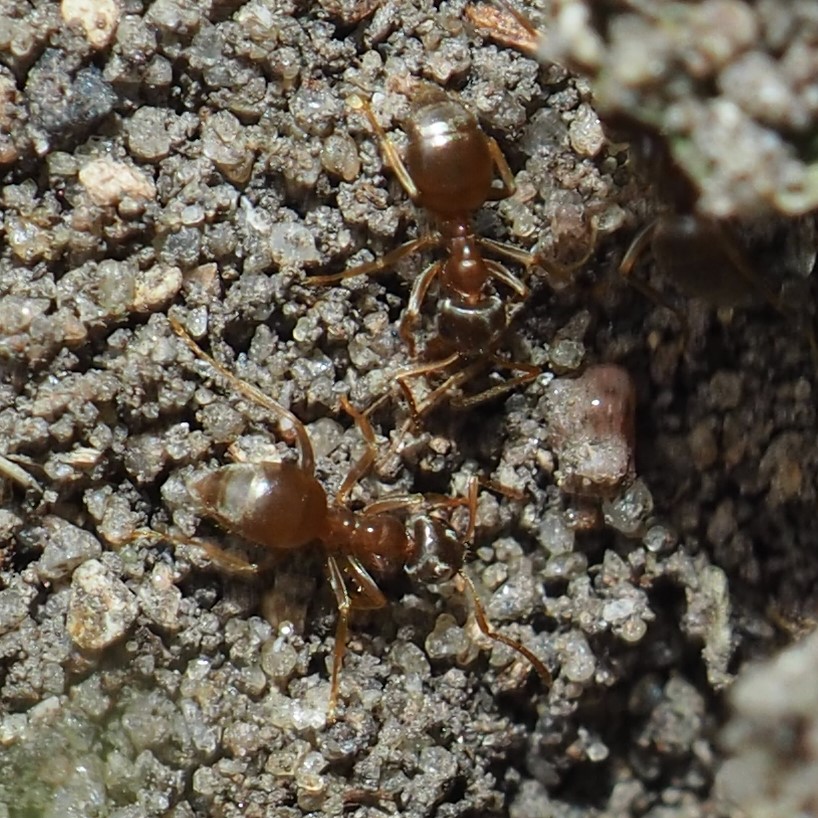
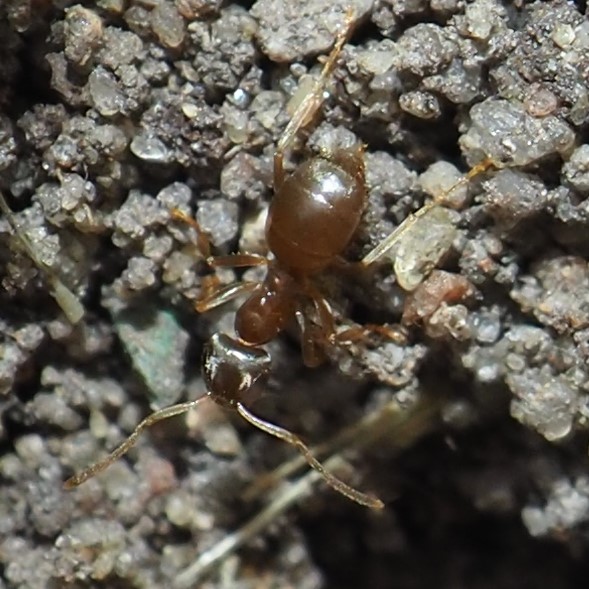
This Citronella Ant is in the genus Lasius, but wasn't identified to species yet. It's about 4 mm long.
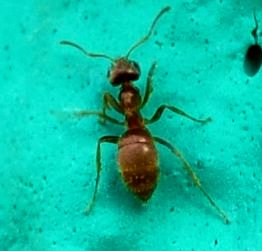
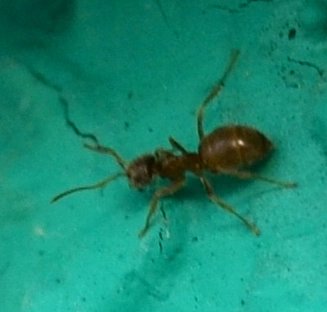
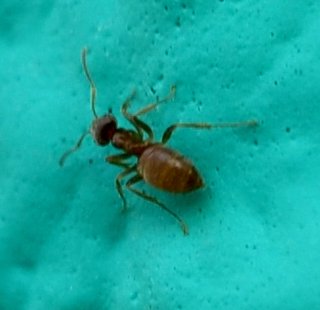
Hairless Rover Ant (Brachymyrmex depilis)
This Hairless Rover Ant is not usually seen. Its skin is so thin that it dries out if above the ground too long. So I was glad to see it up on a leaf. This year I even saw them in a Keeled Treehopper colony trying to nanny the nymphs! Look here
Picture 3 shows a Hairless Rover Queen! She was almost as large as the Queen of the Small Honey Ants.
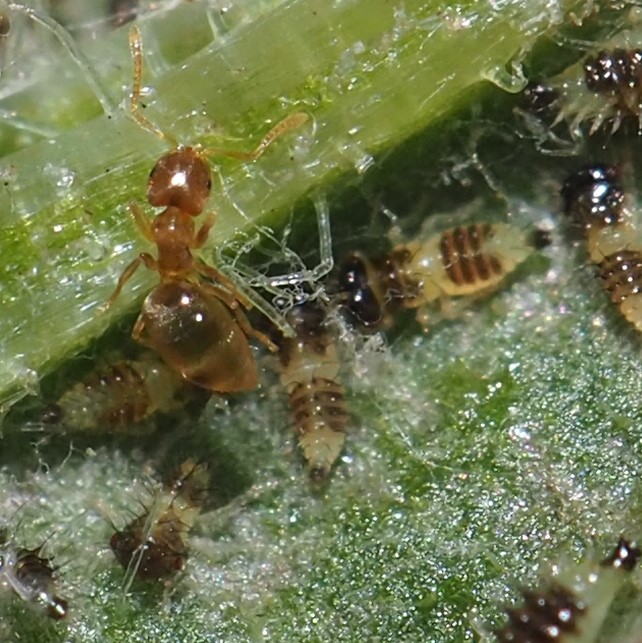
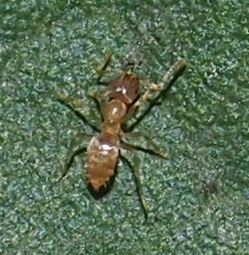
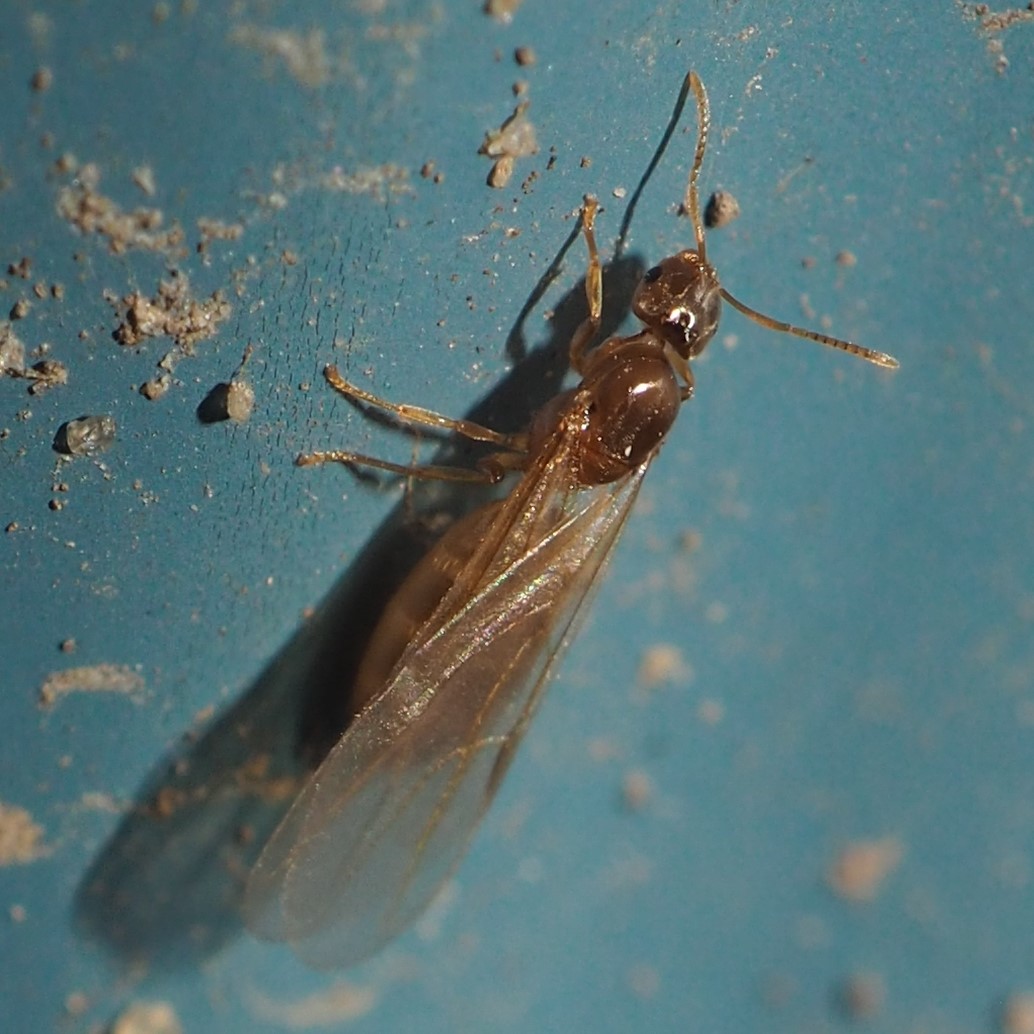
Immigrant Pavement Ant (Tetramorium immigrans)
This ant is the Immigrant Pavement Ant, Tetramorium immigrans. One of its distinguishing characteristics is its square head. In this small video, the ants are trying to carry a large beetle out of the nest.

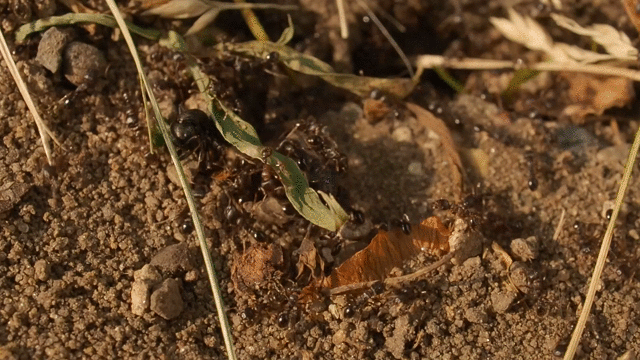
This one is easy to mistake for the Immigrant Pavement Ant, but its head is round, not square. Its gaster does droop too. It is the Punctured Ant, Myrmica punctiventris.
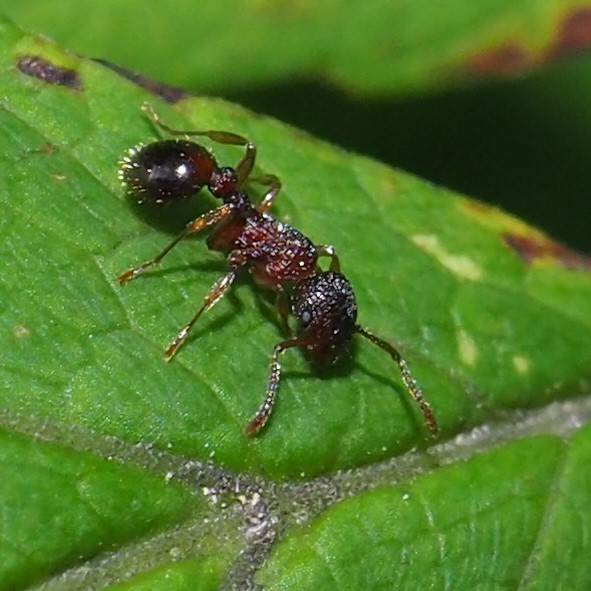
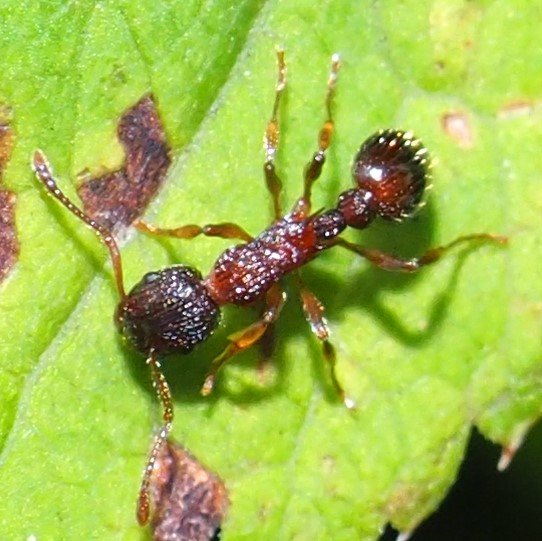
Genus Temnothorax
This tiny ant, Temnothorax curvispinosus, was the first yellow ant I had ever noticed. I really had never thought my yard could harbor so many different kinds of ants.
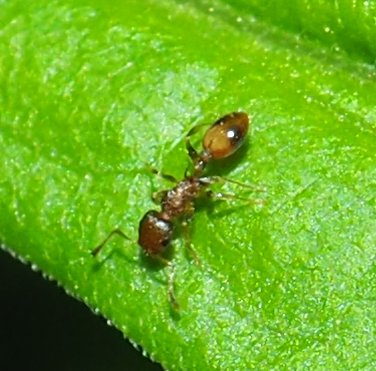

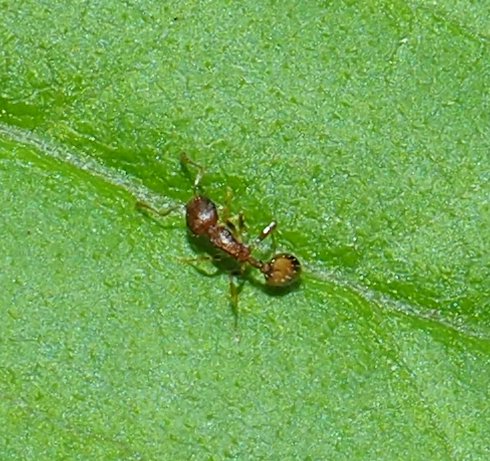
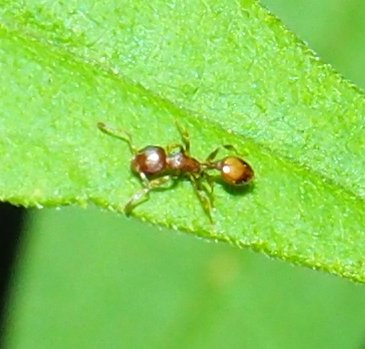
Another Ant in the Temnothorax genus is Schaum's Acorn Ant, Temnothorax schaumii.


Genus Formica
This is a large genus. These Ants (pictures from July 2016) belong to the Complex Formica fusca-group, a member of Wood, Mound, and Field Ants (Genus Formica). The first two seem to be Queens. Sorry I don't know any more about them. They have interesting reflective properties, especially if you catch the light strangely.
This interestly posed Ant (picture 1) is most likely the Silky Ant, Formica subsericea. The others have been identified as members of the Wood, Mound, or Field Ants.

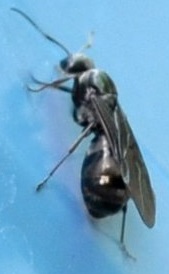

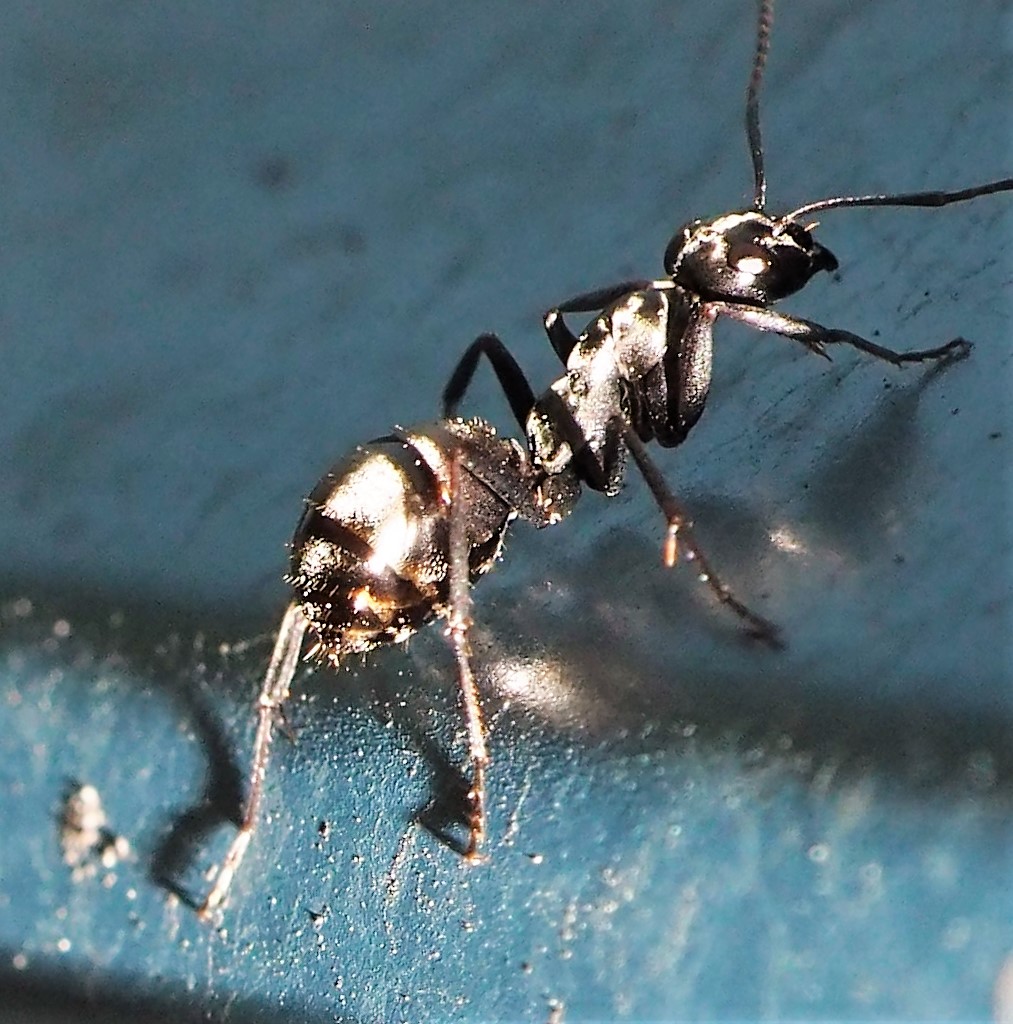
Genus Tapinoma
These next two were some that I incorrectly identified as Silkies, but are in fact the ironically very common Odorous House Ants, Tapinoma sessile, which I'd never consciously seen before. Apparently if you know what you're doing, you might be able to detect a scent.
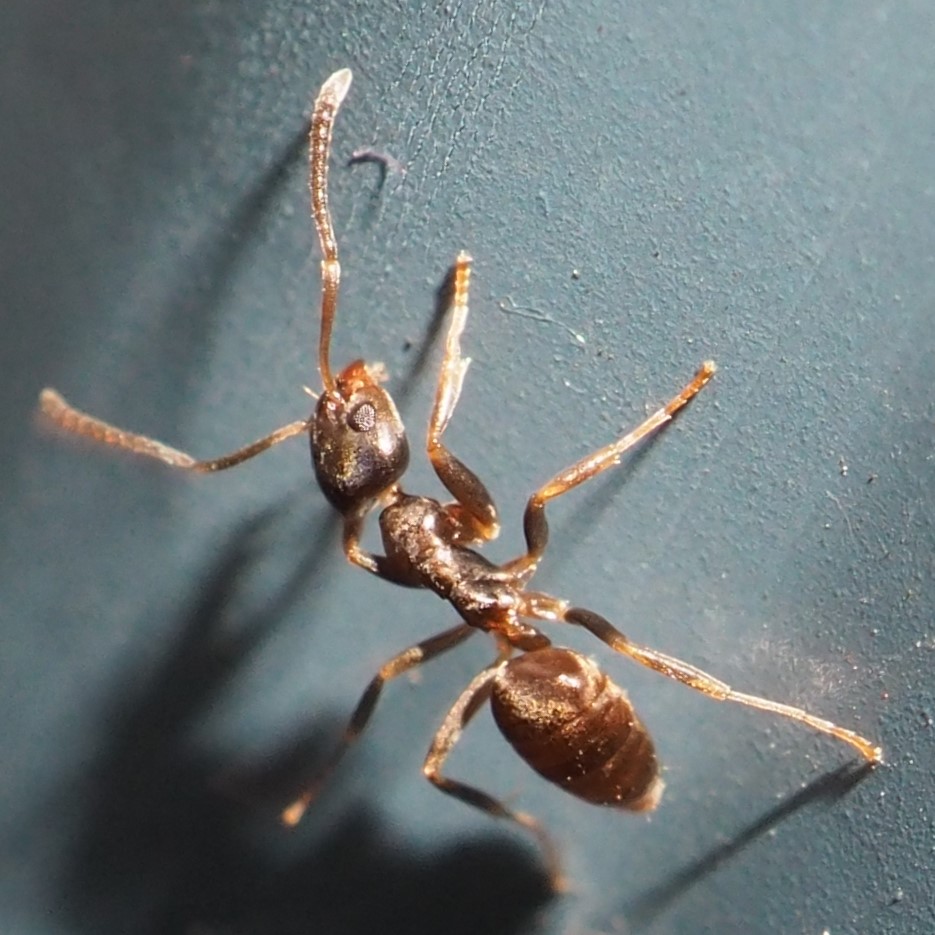
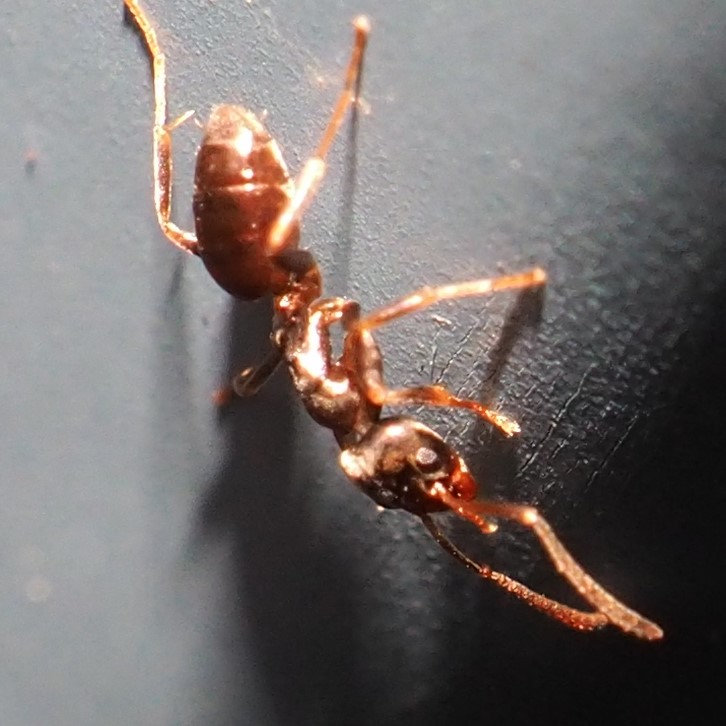
Genus Ponera
Here we have Ponera pennsylvanica, described by Steven Wang as, "A ponerine ant queen! A more waspy looking subfamily of ants, but not as much as some others! P. pennsylvanica is the only sp in your area, but they become more diverse in the southern US."
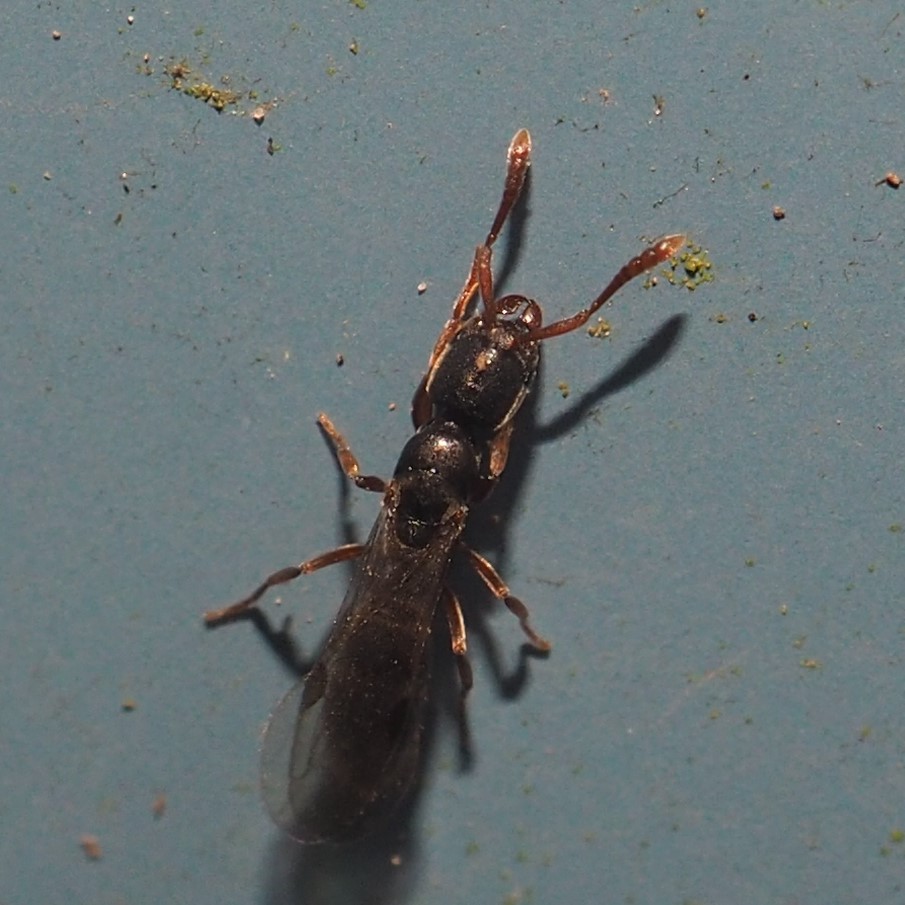
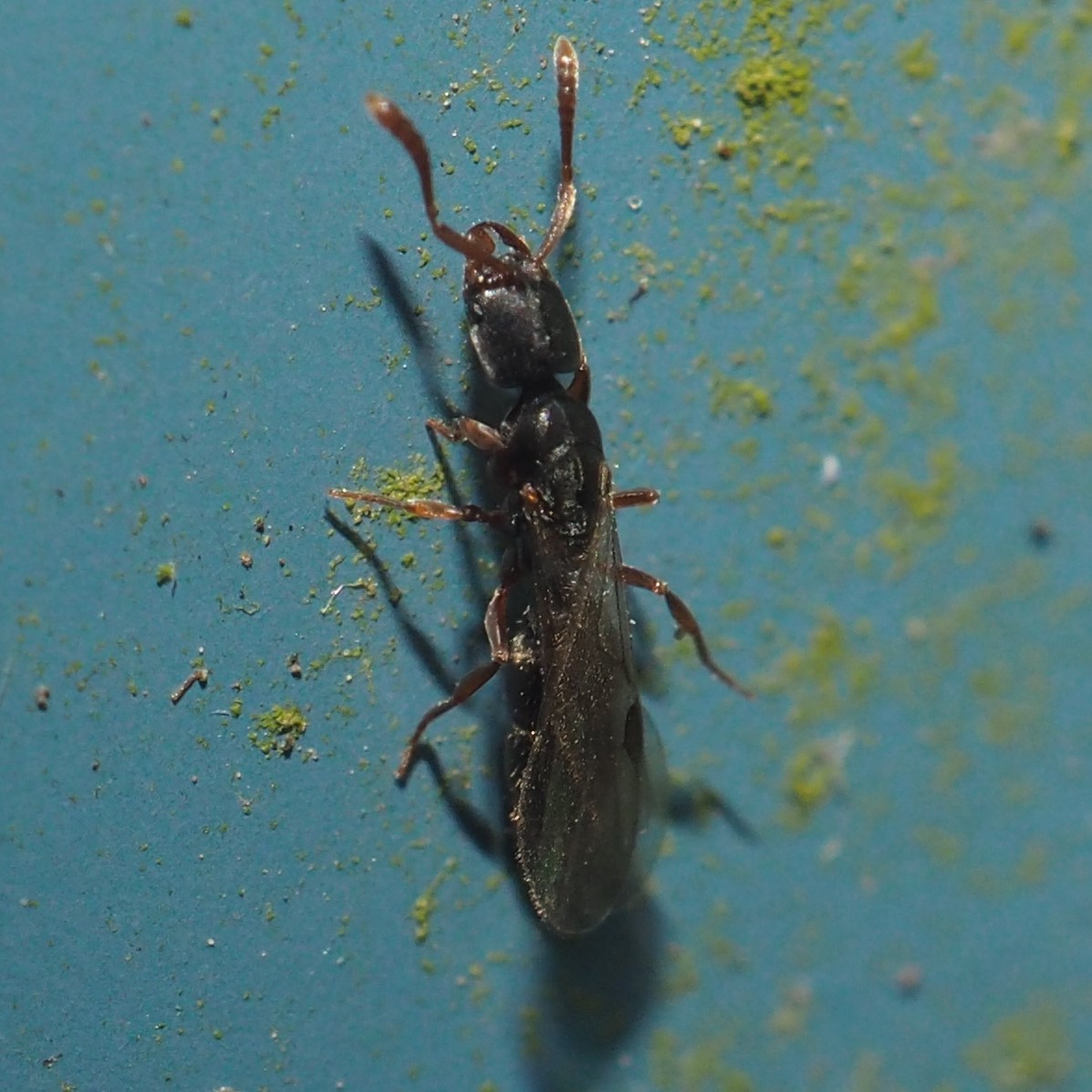
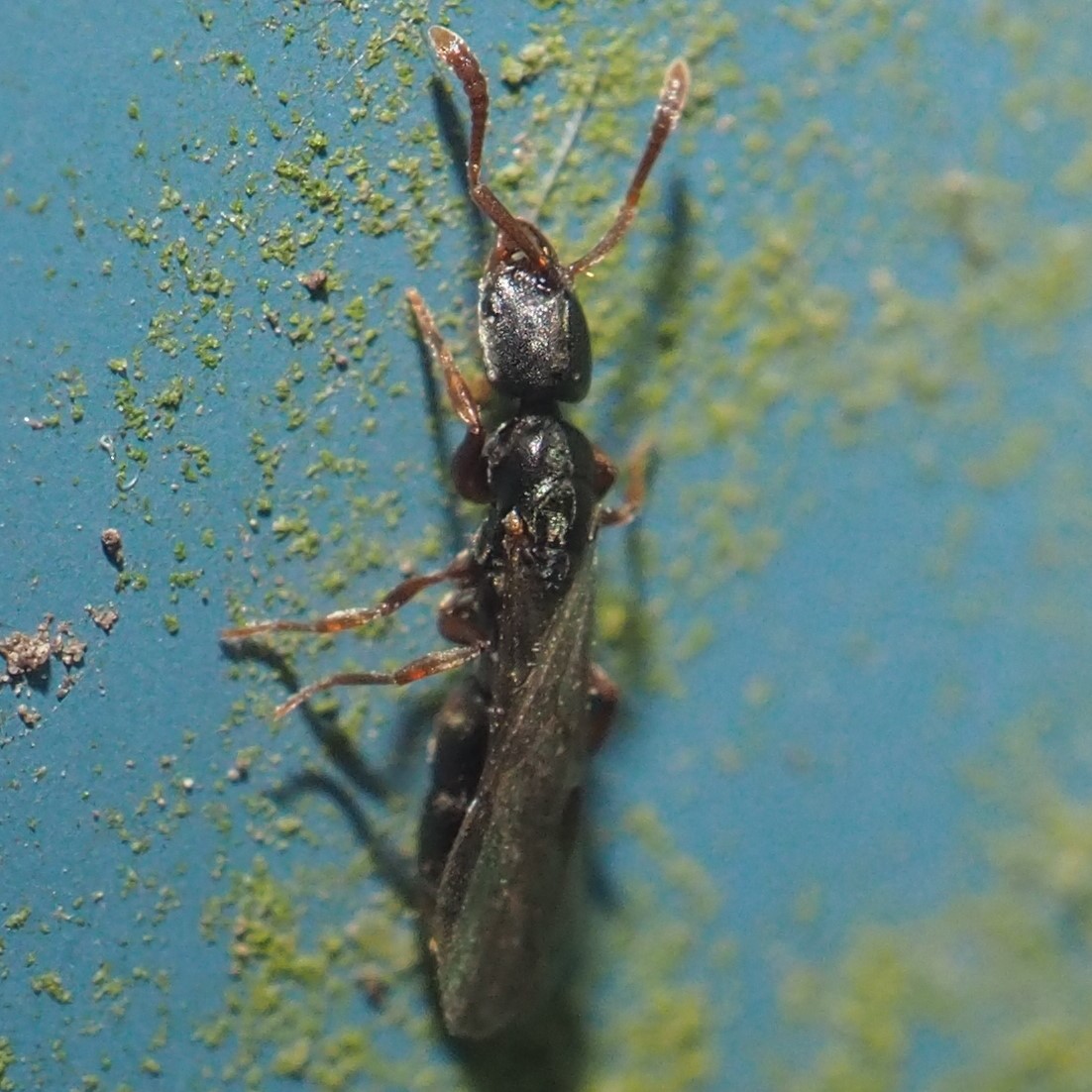
Genus Formica
This is a large genus. These Ants (pictures from July 2016) belong to the Complex Formica fusca-group, and are members of Wood, Mound, and Field Ants (Genus Formica). The first two seem to be Queens. Sorry I don't know any more about them. They have interesting reflective properties, especially if you catch the light strangely.
The last one is Formica subsericea, a Silky Formica Ant.




Ant Mimics
There are a number of other arthropods whose younger forms resemble an ant. For example, there is a Spider that mimics an Ant, but I've never seen one of those. There are two bugs, however, that I've seen nymphs and adults.
The Lupine Bug, Megalotomus quinquespinosus
This bug is in the family Alydidae of Broad-headed Bugs. Its nymph surprised me one day as I was perusing a large Thistle plant and saw (Picture 1) what looked like a strangely shaped ant. It turned out to be a baby Lupine Bug.
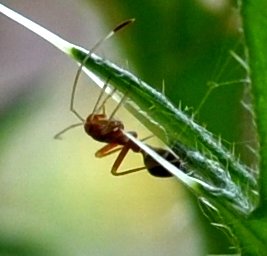

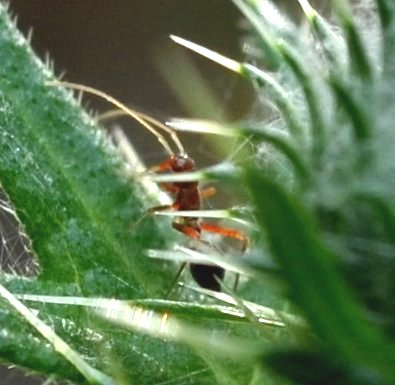
Quite some time later, someone on Researchgate.net told me that the adult of that nymph was the Lupine Bug, and sometime after that I began to see the adult Lupine Bug in my yard.

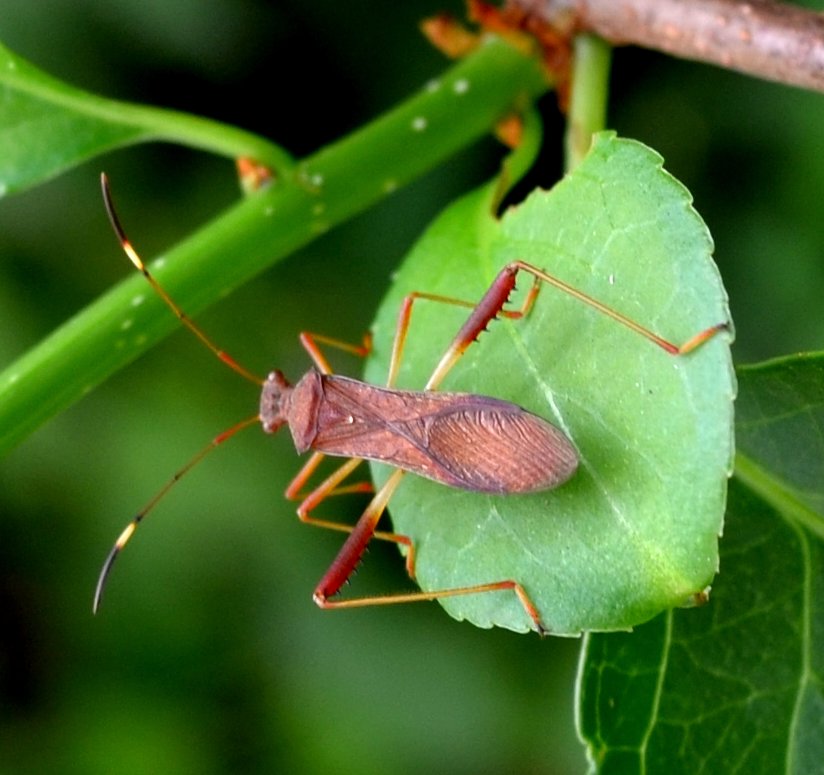
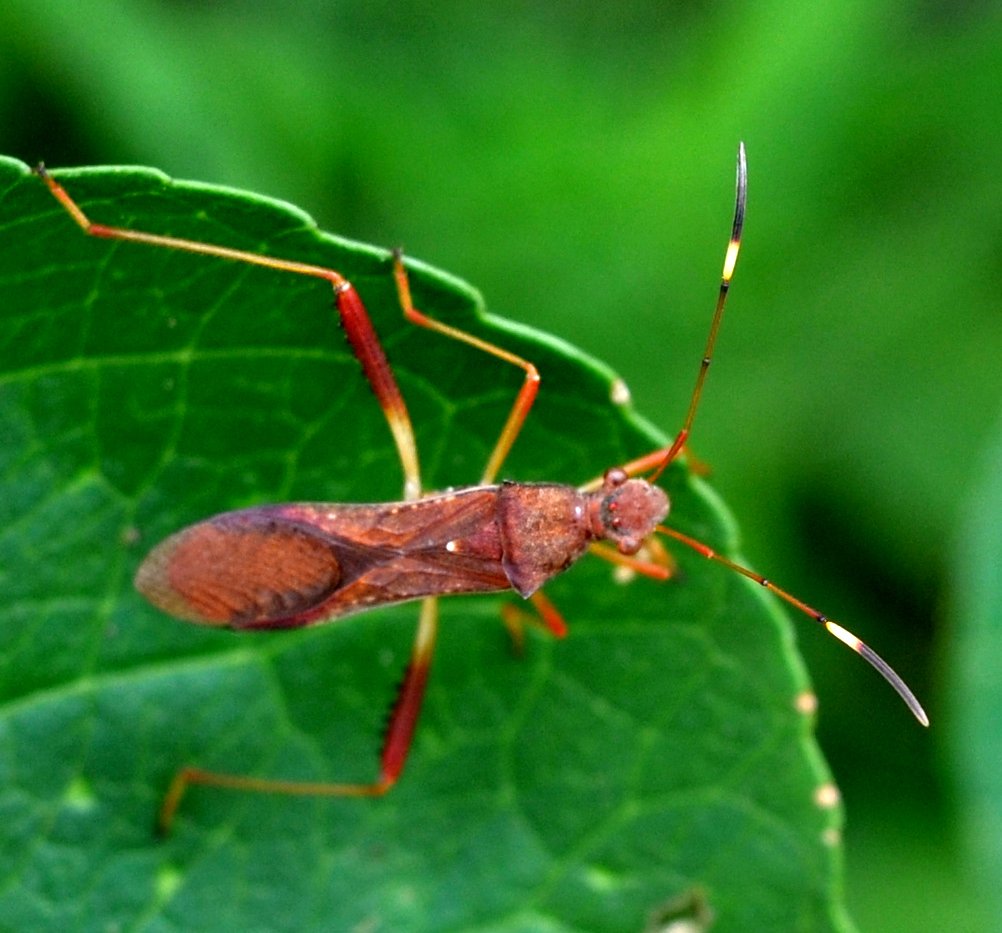
Paraxenetus guttulatus
This bug is in the family Miridae of Plant Bugs. When I first saw the nymph of this bug, I was sure it was one of those ant-mimics. It was quite special though. The abdomen looked as if it had been assembled like a child's toy. It was identified as P. guttulatus, but I had never seen the adult of this bug. The first two sightings were in July 2nd and 6th of 2018. The third was from July 15th, and the front end of the nymph looked as if it had undergone some transformations. (Compare picture 3 with Picture 3 of the next group. The fourth surprised me when I found it - it was actually from July 11th of 2016! But I had still never seen the adult.
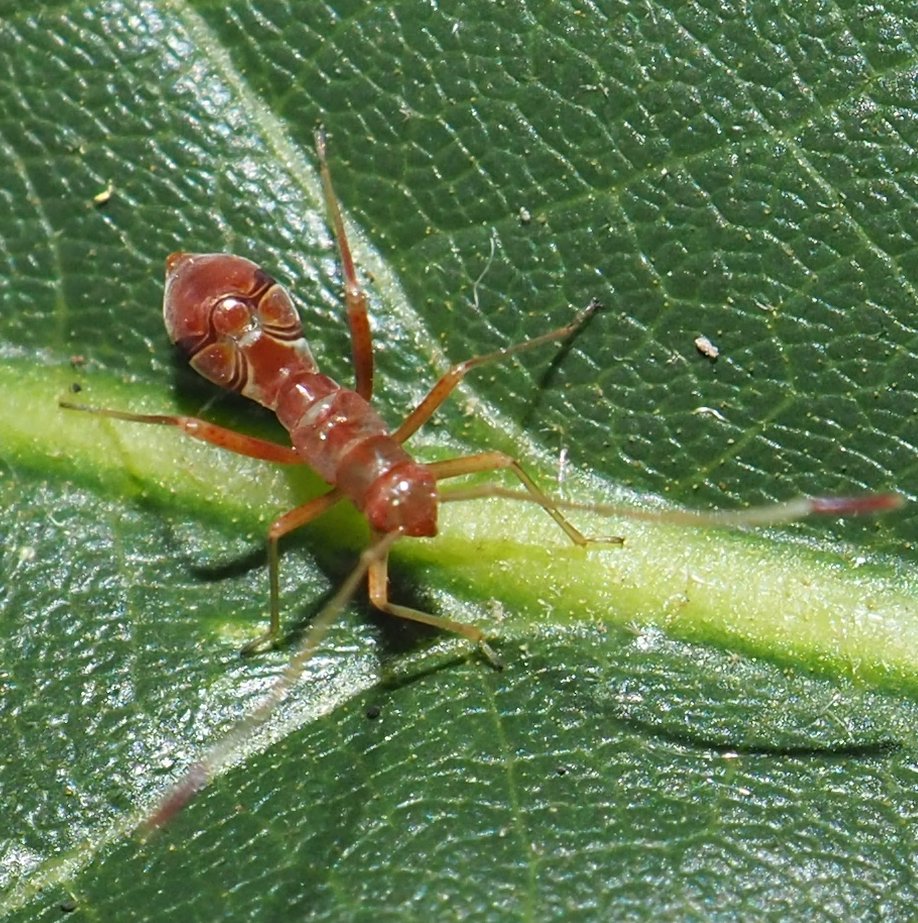
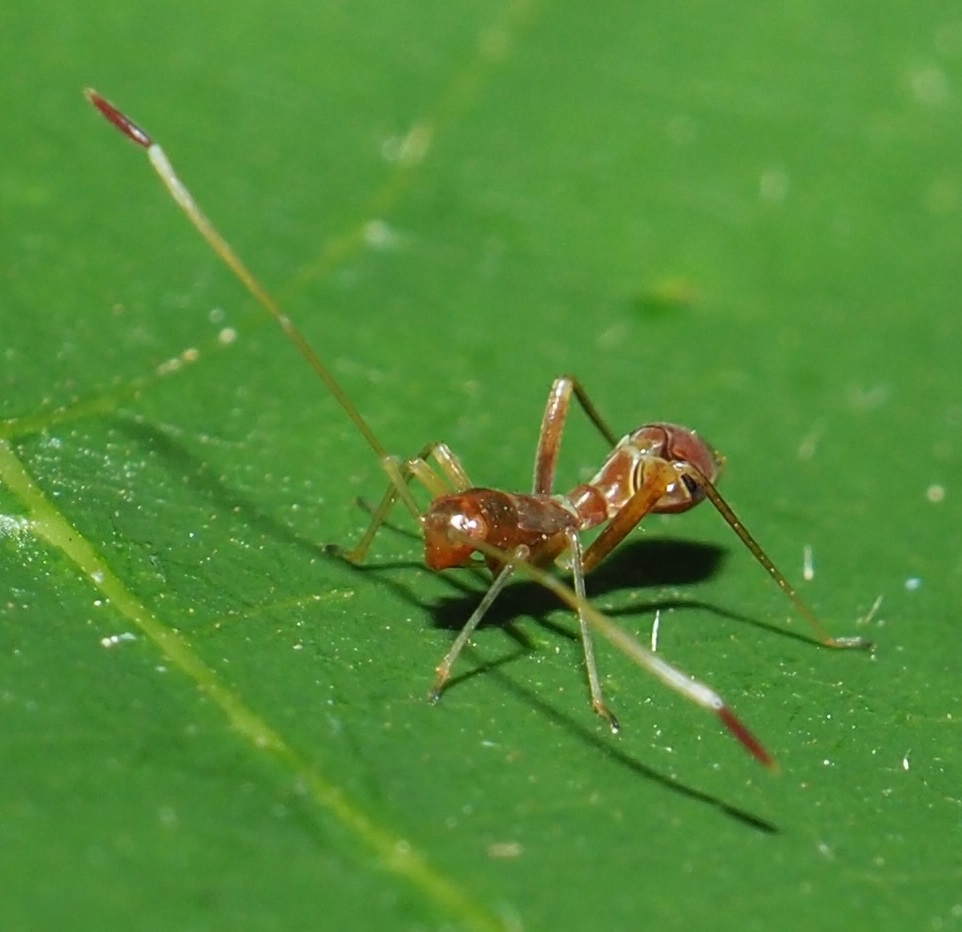
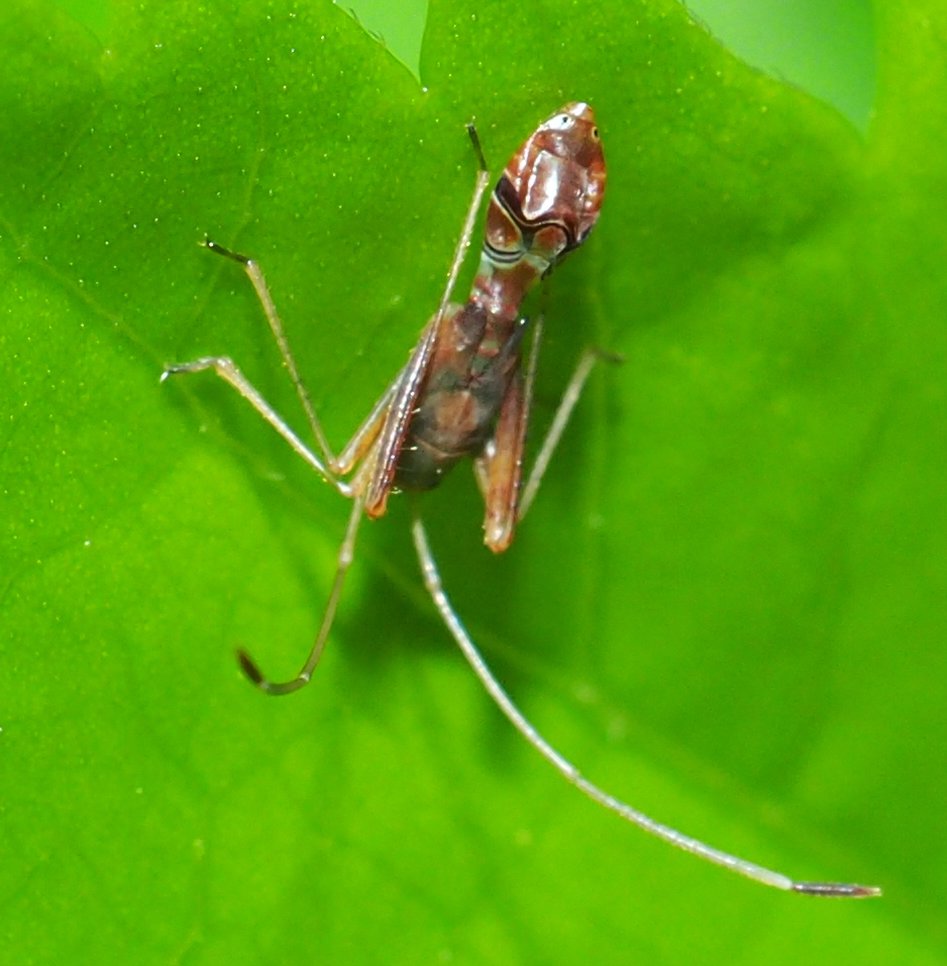
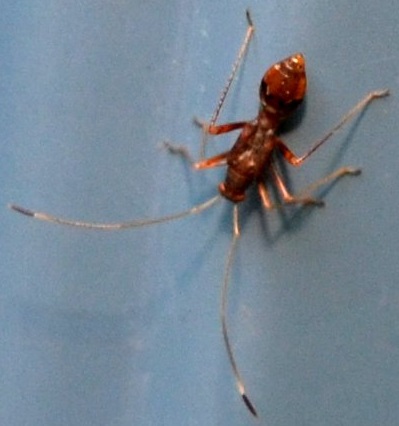
Or so I thought. This adult bug Paraxenetus guttulatus appeared on July 17, 2018, in a goldenrod plant, but I couldn't recognize it as the adult of that mechanized nymph. I wonder what the four little nymphs are in picture 1.
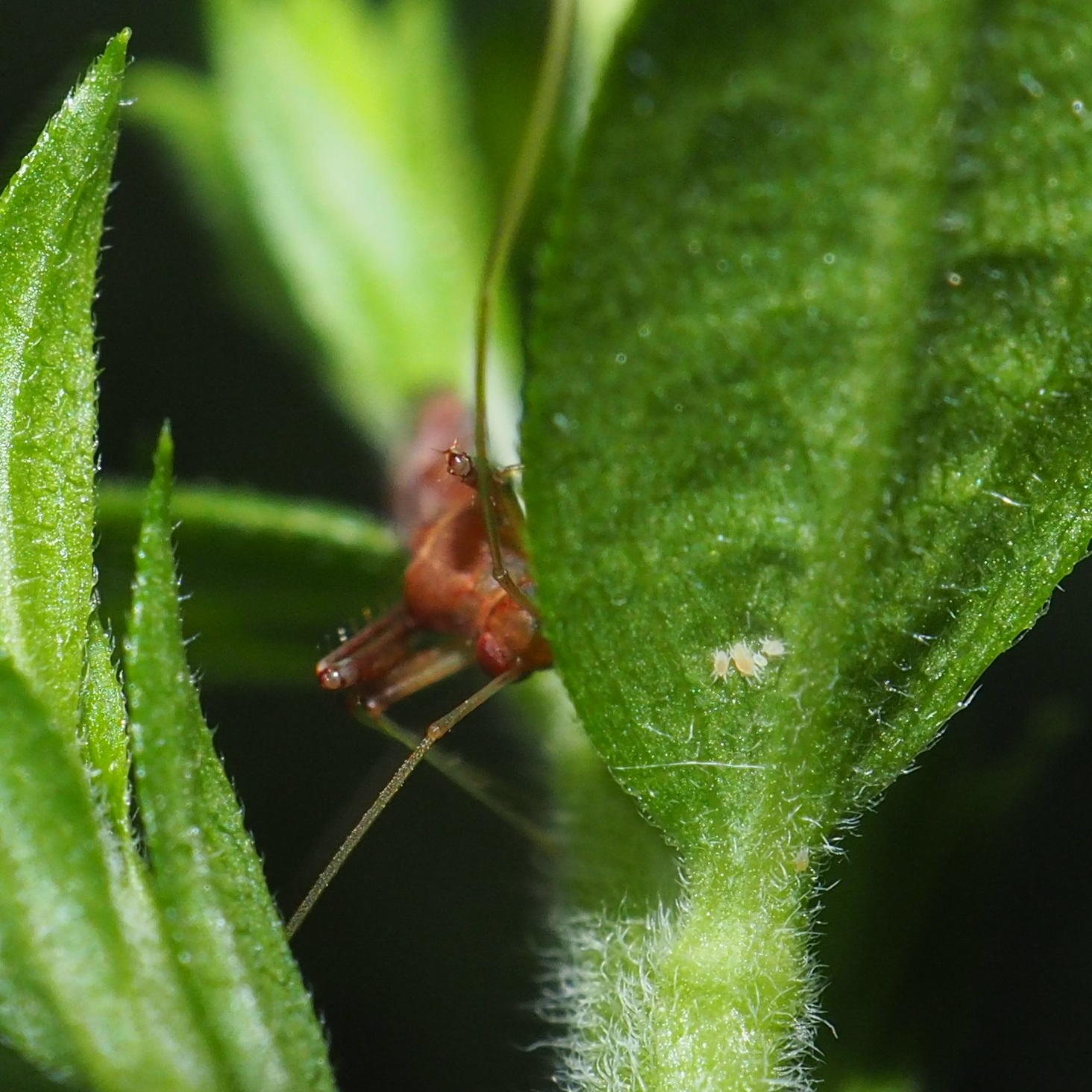


Flash! July 1, 2021. Here is another Ant Mimic from the True Bug family. Andrew Meeds of Bugguide and iNat thinks it may turn out to be from the Alydidae again, like the Lupine Bug. It is something new to me! I never saw something that basically reminds one of an Ant, but has the wrong antennae and what looks like an "extra head". I'll have to keep my eye out for it.
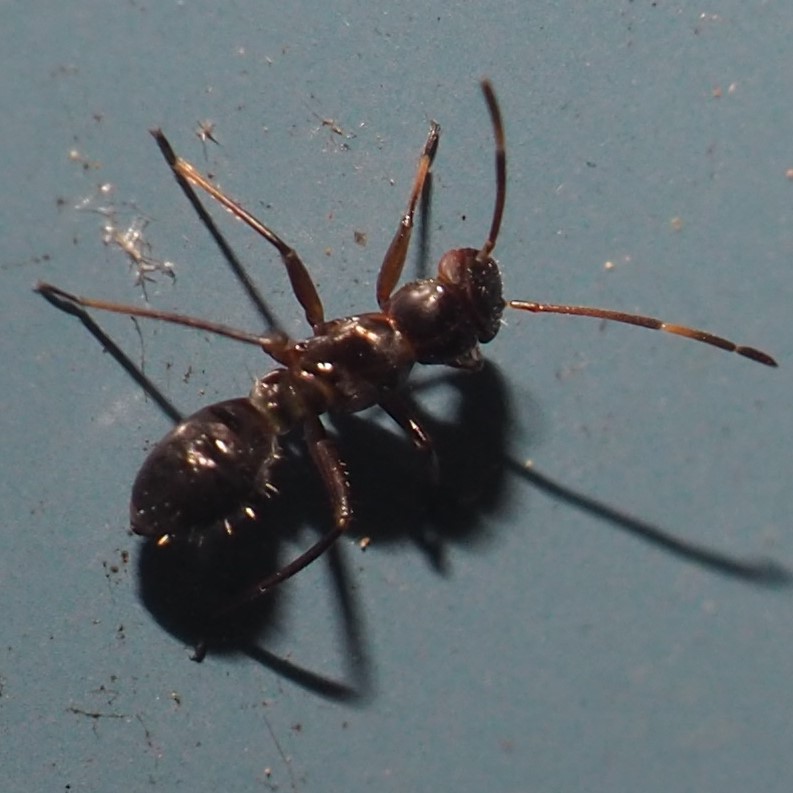
Note: Besides the Bugs whose young resemble Ants, there are multitudinous other creatures whose adults are called "Antlike", like this Beetle, Malporus formicarius, that I found in May 2019. There are also Orthopteran examples, like this one, which I think shows a Cricket mimicking an Ant on the goutweed in May 2017.
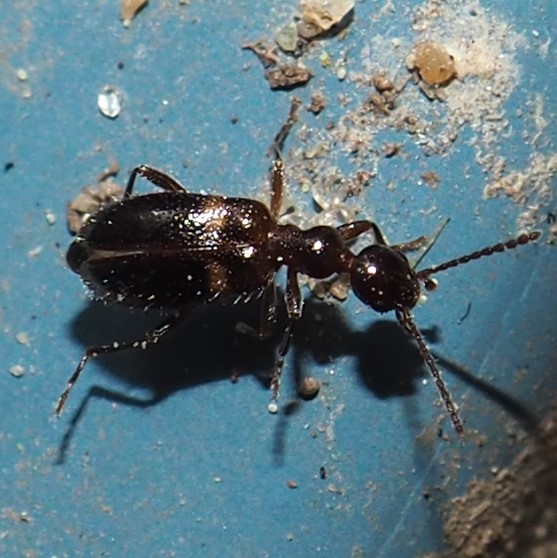
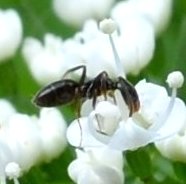
Spider Ant Mimics
You might think, that's it, two kinds of bugs that in their nymphal form mimic ants. How many other cases do you think there might be? Well, now that I've been looking curiously at this phenomenon, I'm beginning to think there might be a lot more. So far this next one is the only other example I've found. It resembles a spider of genus Peckhamia,which seems to contain quite a few Jumping Spiders that look like ants. Another example from Bugguide is This One. In fact, if you go to Bugguide and search on "ant mimic", you will find LOTS of examples. The jumping spider in my picture is not either of these, but seems to be related. I thought this was an ant until I counted the legs. It is a Spider with long legs, supporting a very Ant-like body.
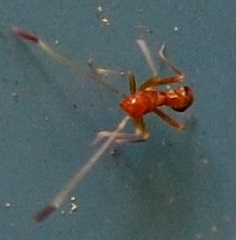
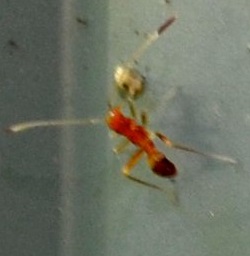
In 2021, I began to find this Ant Mimic Sac Spider. Several times I entered it into my blog as an Ant. But it turned out to be a well-known Sac Spider that mimics Ants.
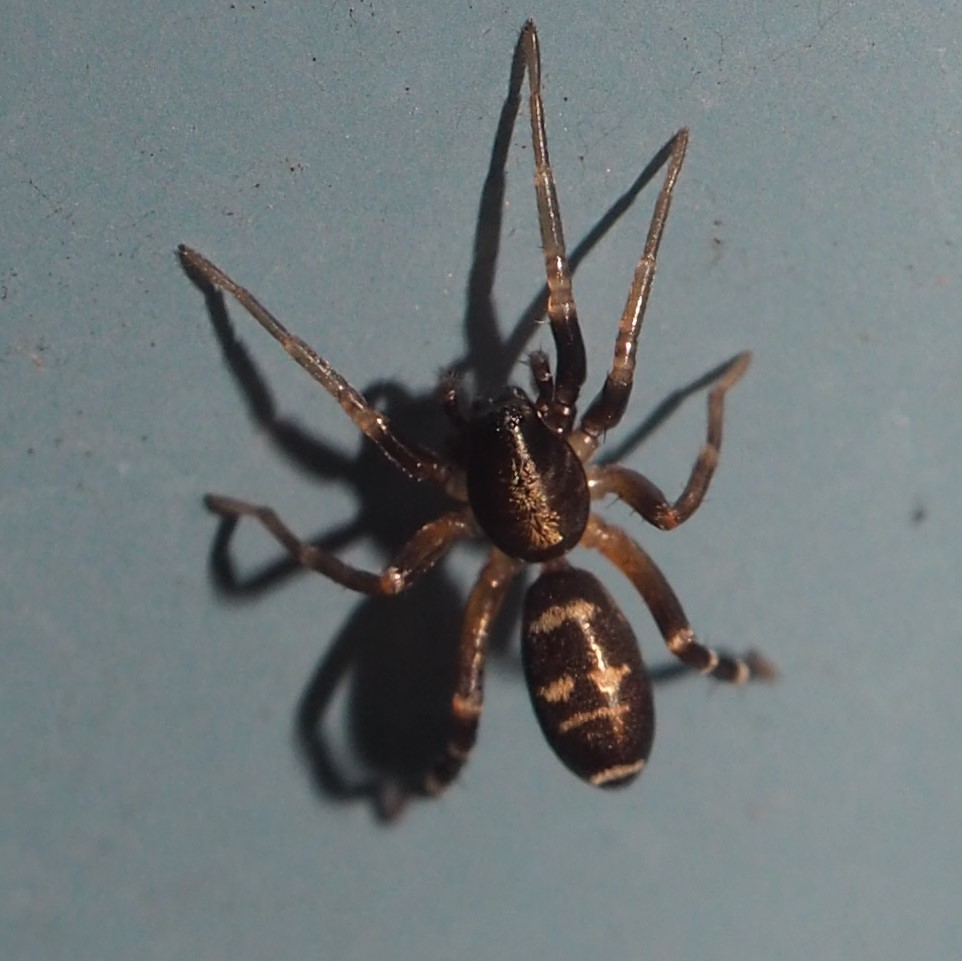
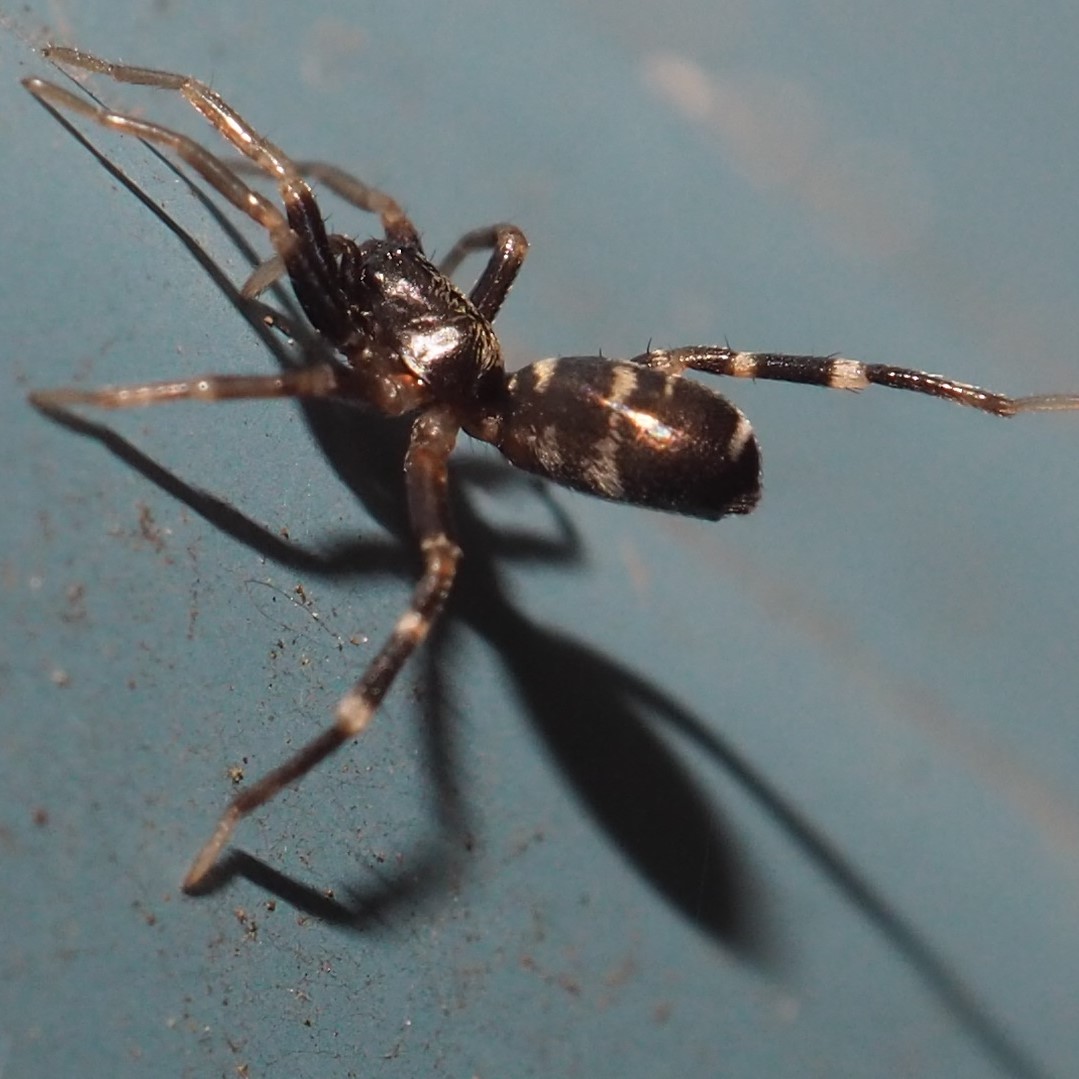
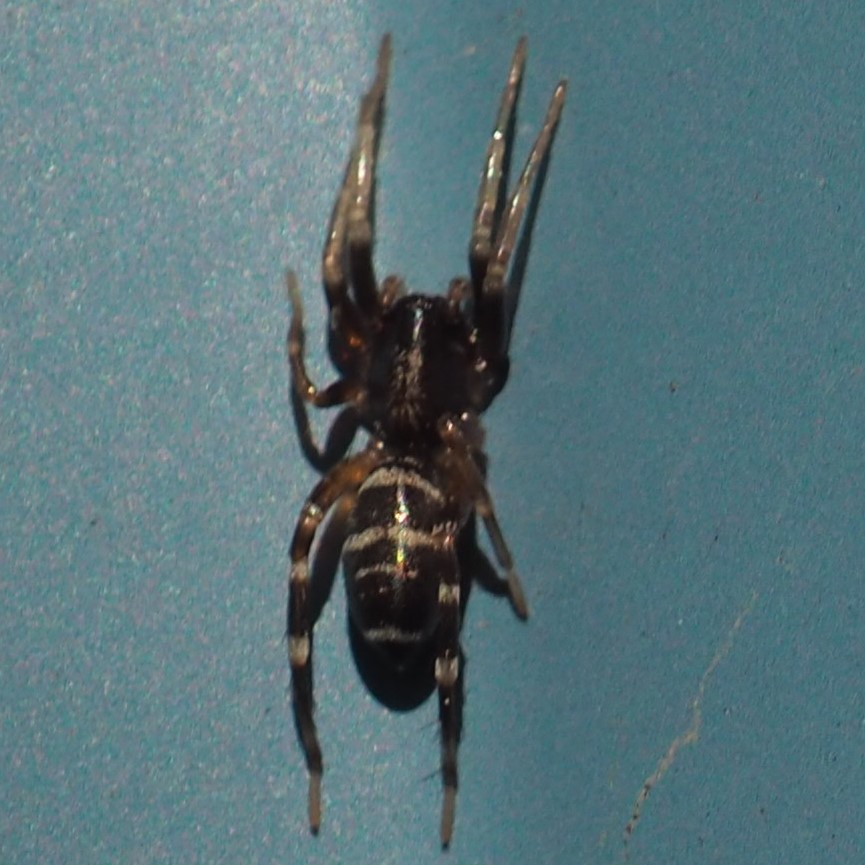
Back to February 3, 2019
Forward to March 3, 2019
Back to main menu
copyright Martha O'Kennon 2019











.jpg)
















.jpg)



























































